Piedmont is a region of northwest Italy bordering France and Switzerland, with Turin as its capital and largest city. Piedmont was high on my list of places in Italy to visit. Friends of mine who’d been there were convinced that I would love Piedmont’s scenery and cuisine. When I received an invitation by the Italian Tourist Board to explore rural Piedmont, I didn’t have to think twice! Based on their suggestions, I created a Piedmont road trip itinerary that covered the Italian Alps in the west, the province of Verbano-Cusio-Ossola in the north, and the Monferrato hills in the east.
It turned out to be a wondrous trip along majestic mountains, glistening lakes, pristine forests, and villages and towns bursting with charm. I had a fantastic time exploring these places, enjoying the amazing food and wines, and meeting the friendliest people along the way. Follow me on my road trip through some of the most beautiful places in Piedmont:
Beautiful places to visit in Piedmont
My Piedmont road trip itinerary
I started my 10-day Piedmont road trip after picking up my rental car in Turin. From there, I drove west to Val Chisone in the Italian Alps. After spending 3 nights there, I headed north to the province of Verbano-Cusio-Ossola. I based myself in the province’s largest town, Domodossola, for 3 nights. The final leg of my trip took me to the Monferrato hills, east of Turin, where I stayed for another 3 nights before returning to Turin. Here are the places I visited in Piedmont, along with some of my most memorable experiences:
Val Chisone
One of several valleys in western Piedmont, Val Chisone is less than a two-hour drive from Turin. I chose Pragelato as a base for several days due to its central location. As I explored the valley, I was continuously in awe of its imposing peaks and forested slopes. I visited numerous villages and historical attractions, went on beautiful hikes, and discovered an area with distinct customs and traditions. Here are the best places to visit in Val Chisone:
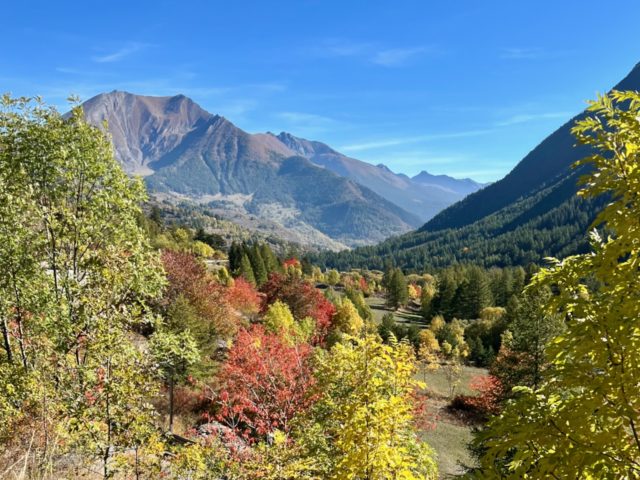
Fenestrelle
As I drove into the valley along the SP23R road, I soon spotted a massive structure draping the slopes of the mountains: the Fenestrelle Fortress, the largest alpine fortification in Europe.
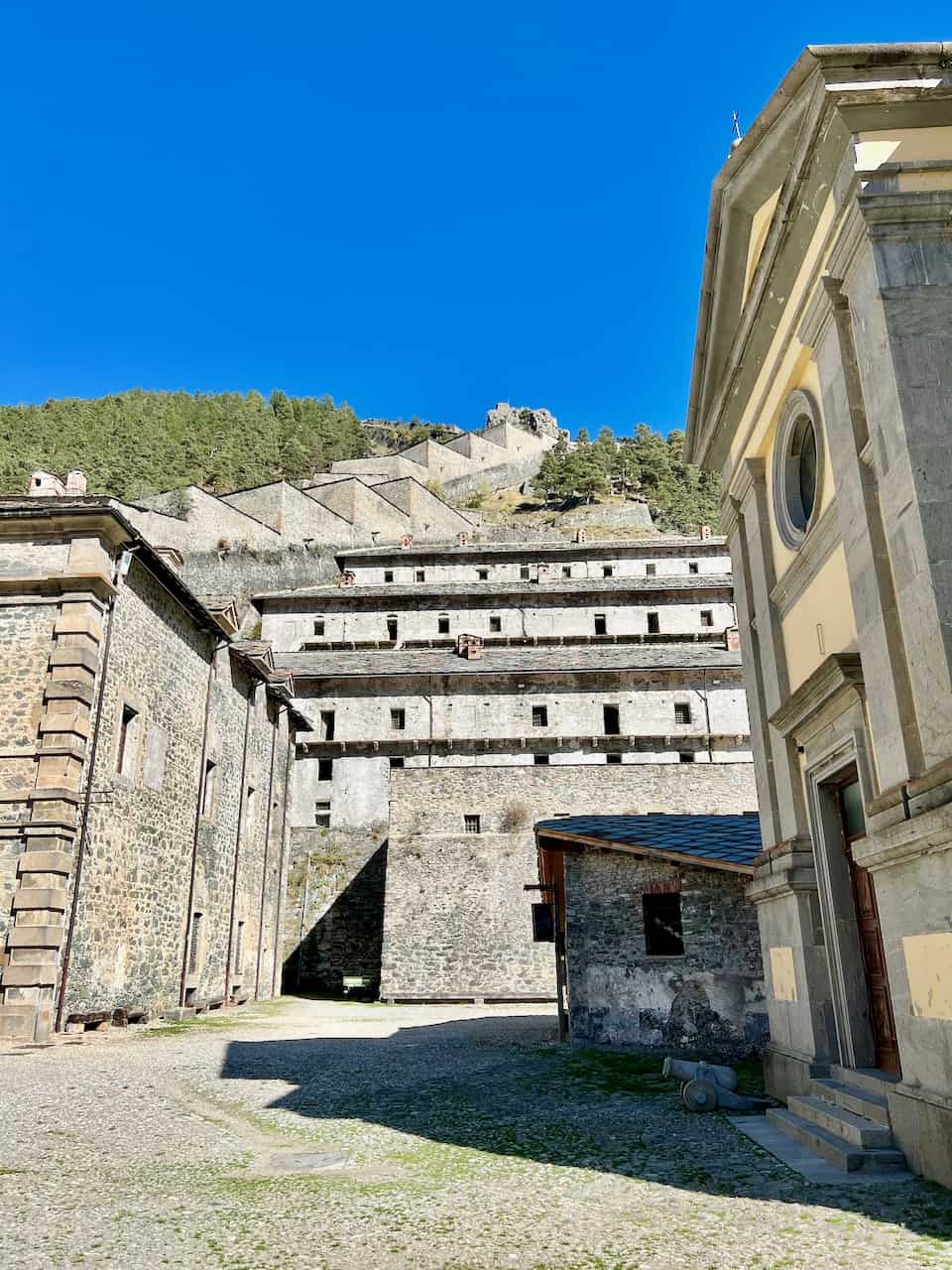
The fortress overlooks the village of Fenestrelle and was built in the 18th and 19th centuries by the Savoys to protect Turin from French forces. It consists of several forts with a total surface area of 1.3 million square meters and extends almost 700 meters in altitude (from 1,100 – 1,800 meters)! A covered staircase with 4,000 steps links the forts.
I also visited the village of Fenestrelle, where I found a great place for lunch: La Rosa Rossa (info). Local culinary specialties include tajarin pasta (often cooked with butter and sage), beef, trout, game (wild boar and deer), and when they’re in season, porcini mushrooms.
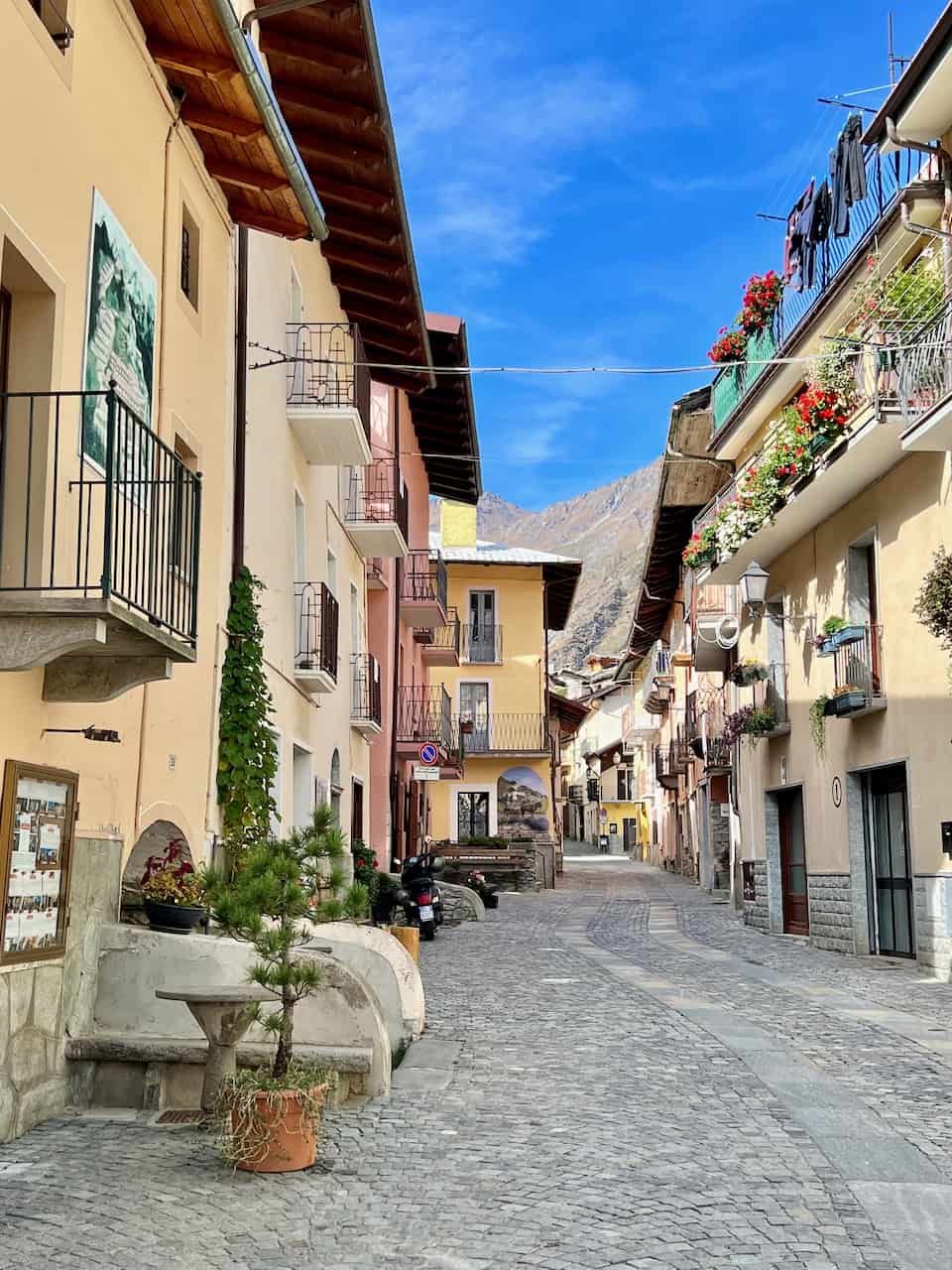
Usseaux
Usseaux is arguably the most charming village in Val Chisone. It’s small (with less than 200 inhabitants) but it was a joy to stroll around its ancient streets and lanes, colourfully decorated with potted plants and flowers.
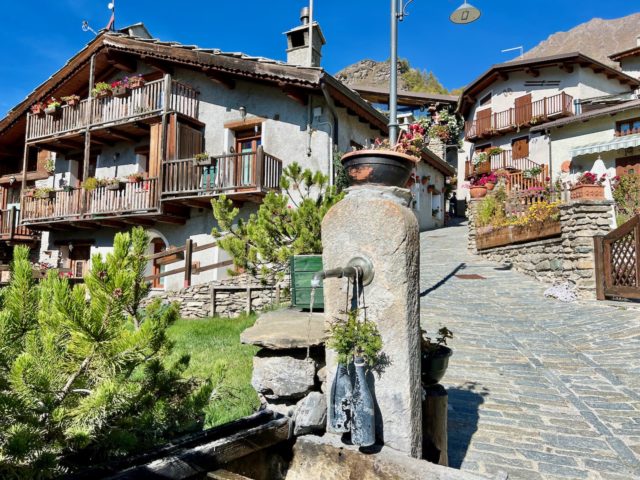
Usseaux is famous for its more than 40 murals depicting Alpine life and fauna, and it was fun spotting them. The village, perched on a slope and boasting panoramic views of the mountains and valley, is incredibly photogenic.
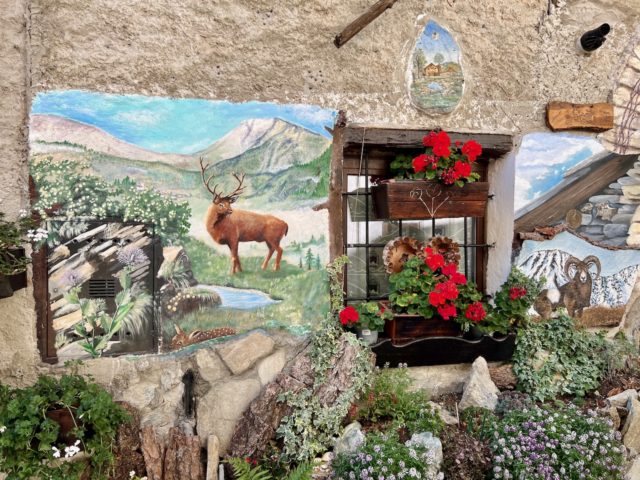
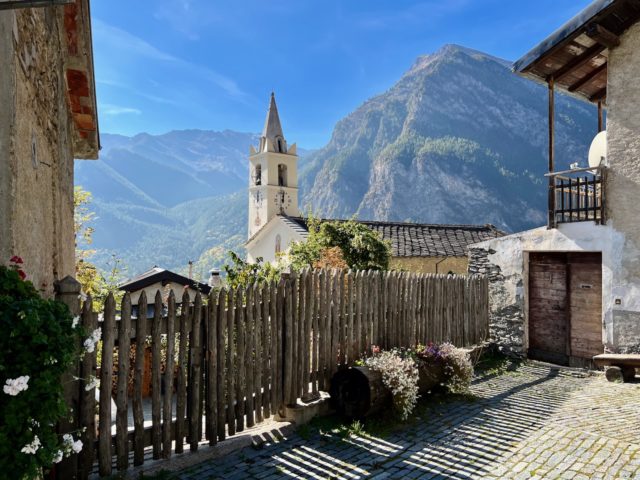
Across the Chisone River from Usseaux lies Lago del Laux, one of the most accessible mountain lakes in the area. Framed by towering firs and an imposing mountain, the emerald-coloured lake is absolutely stunning.
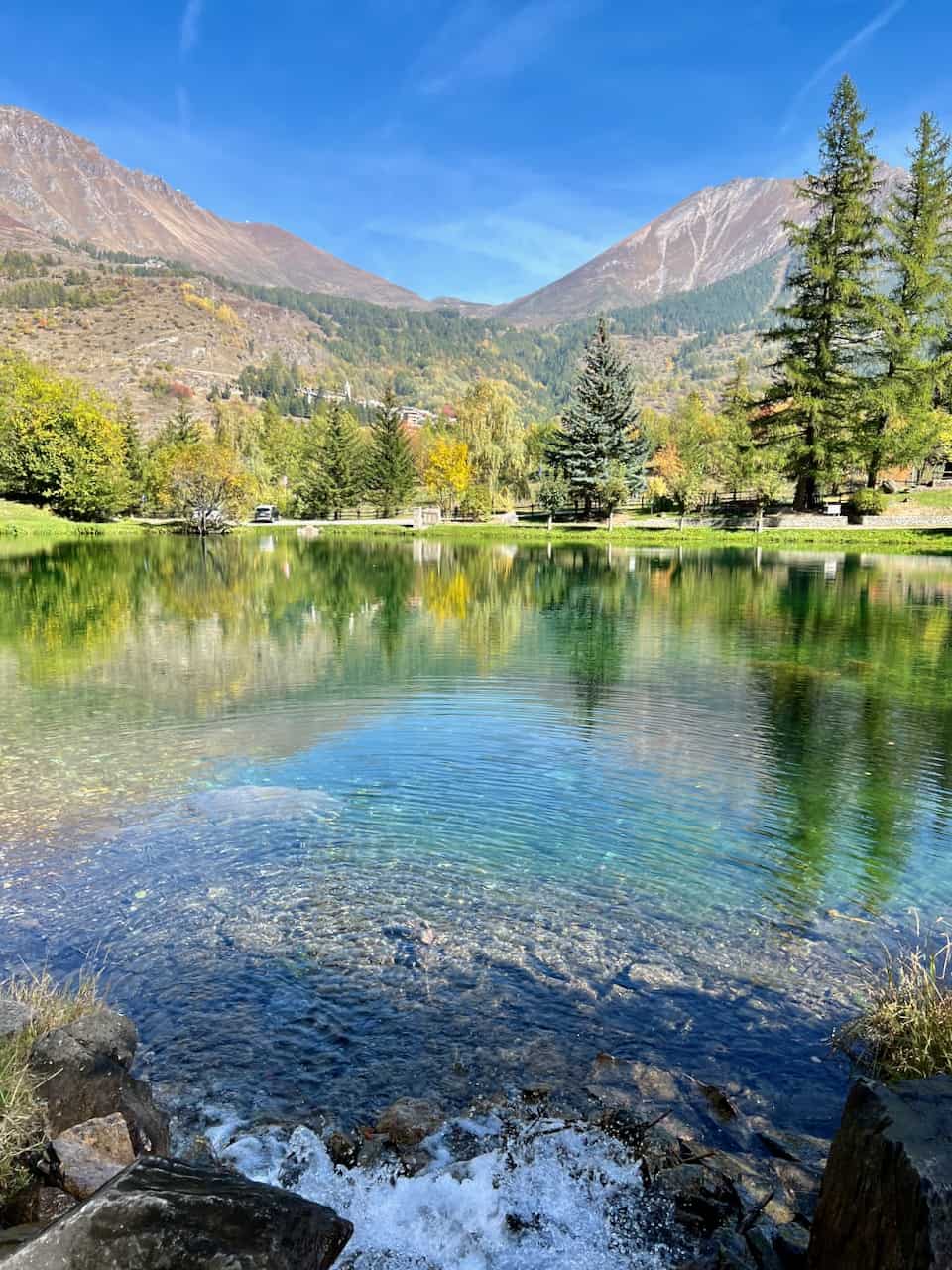
Laux
The hamlet of Laux, located a short walk from Lago del Laux, is one of the most authentic and best preserved Alpine villages in Val Chisone. Walking down its main street, lined by gorgeous stone houses with wooden balconies, is like taking a step back in time!
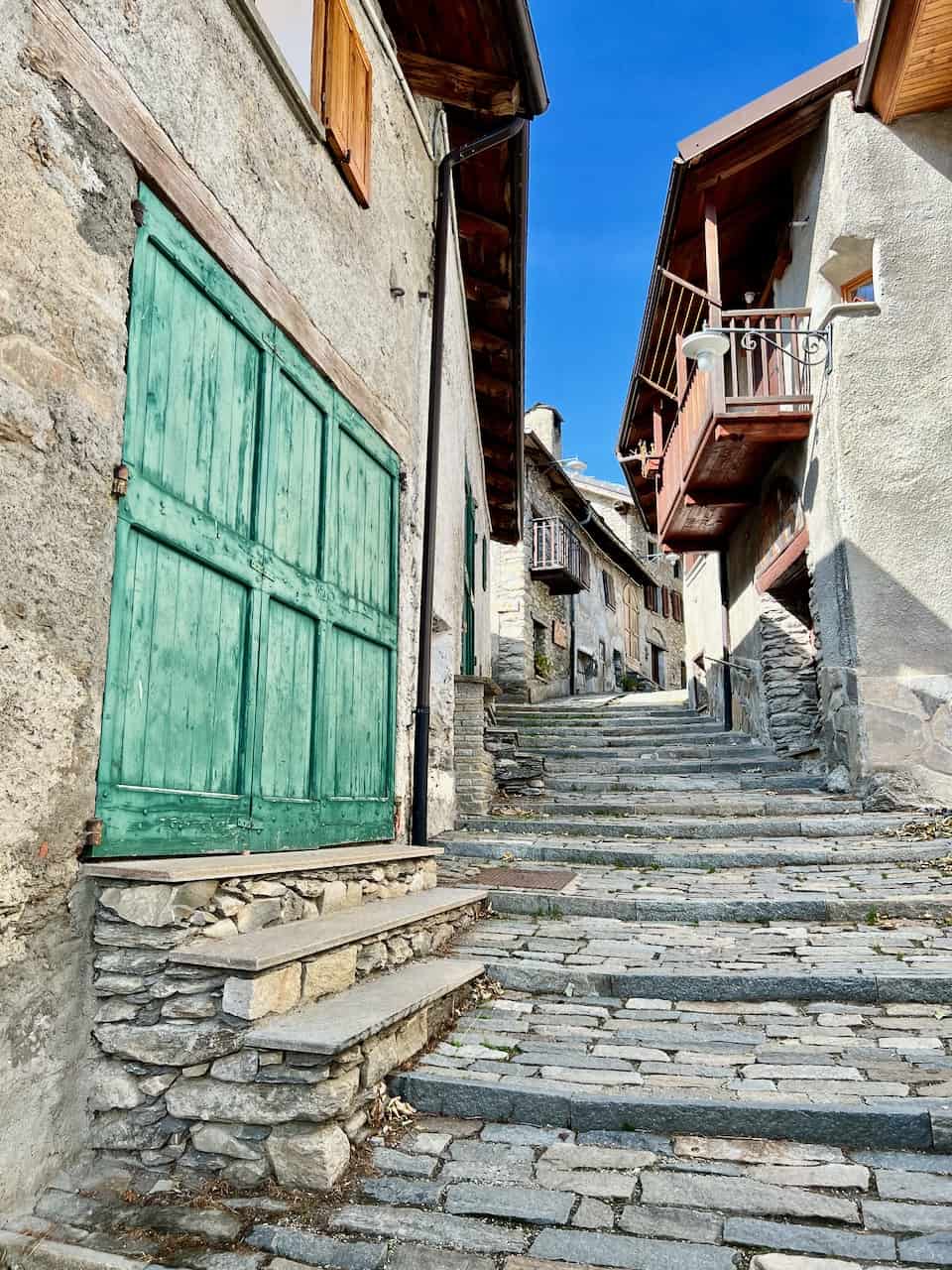
Pragelato
Pragelato is a village that consists of several communes stretched out along the SP23R road. Due to its central location in Val Chisone, I decided to make Pragelato my base for 3 nights where I stayed at the rustic Agriturismo Rivet D’Or. There are several bar/restaurants nearby such as the lively Tapp-One (info).
The village hosted several events during the 2006 Turin Winter Olympics, including the ski-jumping events. In the summer months, the area is popular with hikers and mountain-bikers, who come to explore the countless trails.
One thing that immediately struck me as I strolled around the communes of Pragelato is its Alpine architecture: stone houses, with hanging balconies, and sweeping, wooden roofs. I found some of the loveliest houses in Pragelato-Rua and Pragelato-Traverses.
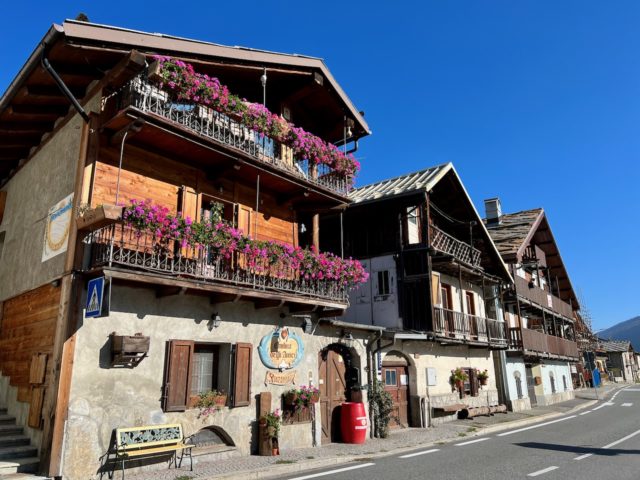
I also saw numerous workshops where wooden figurines and furniture are created, an age-old wood-carving tradition that can be seen throughout the valley. In Pragelato-Rivet, along with its woodcraft galleries, I also discovered the small Costume Museum which showcases the traditional costumes of the valley, with their rich and intricate embroidery.
Val Troncea
Near Pragelato lies the beautiful Val Troncea Nature Park. I spent one morning hiking in the park, along a gushing river lined by the slopes of massive mountains blanketed by pine and larch trees. It was absolutely breathtaking!
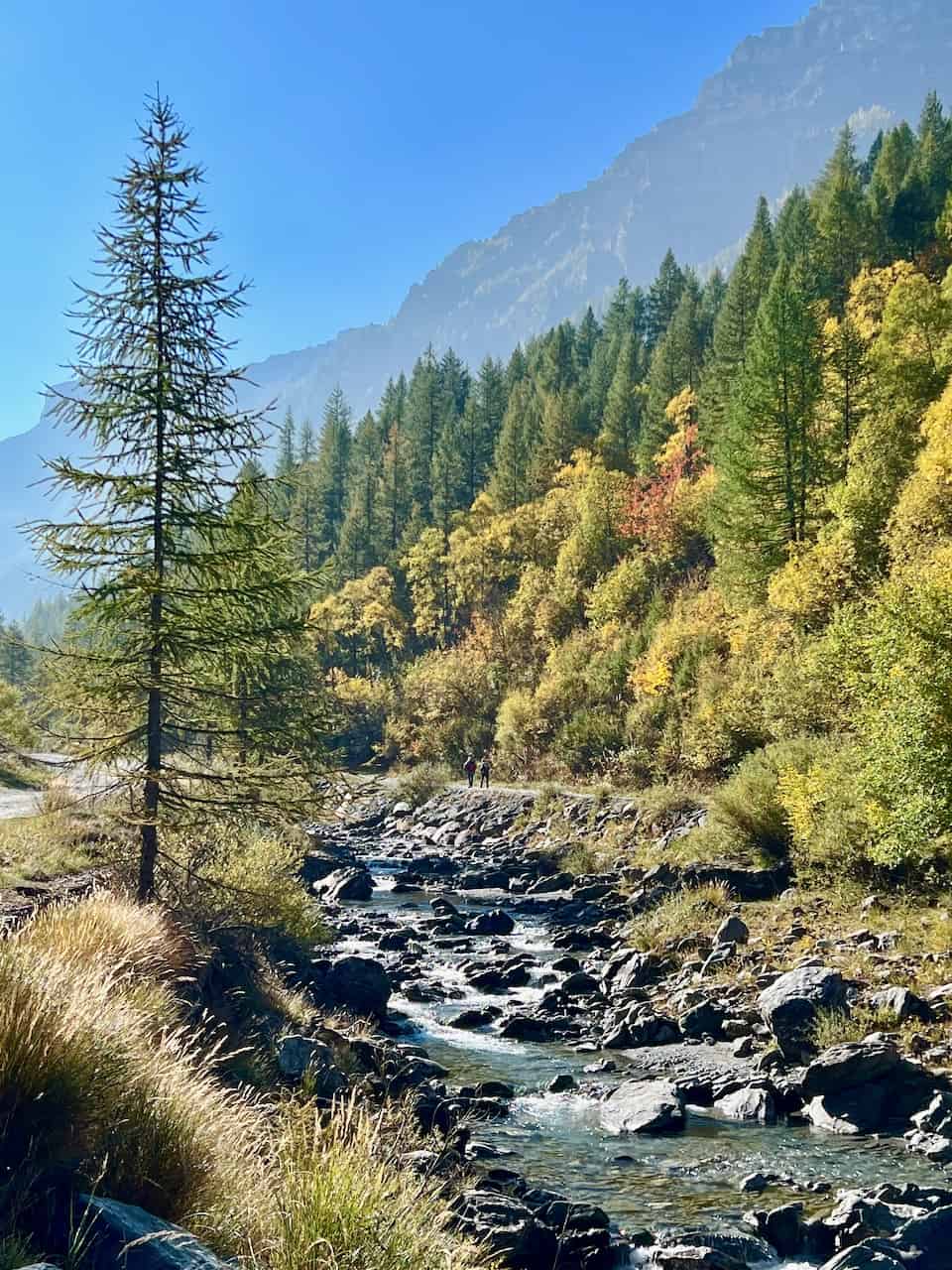
Sestriere
I also visited the village of Sestriere, a famous ski resort about a 15-minute drive from Pragelato. Many of the ski events of the 2006 Turin Winter Olympics were held there.
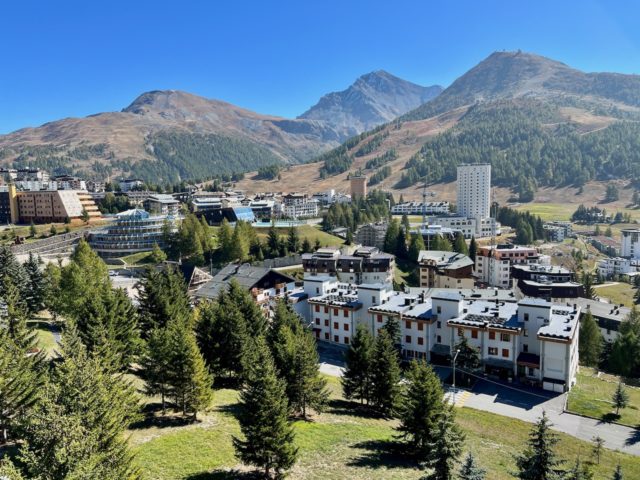
It’s also a popular hiking and mountain-biking area in the summer. Of its many trails, the Strada dell’Assietta, a 34 kilometre long dirt road, is perhaps the most famous. It runs along a mountain ridge and lies almost entirely above 2,000 meters.
Valle Argentera
From Sestriere, I followed the SP215 road to nearby Valle Argentera. It’s a scenic drive that first descends into the valley, offering stunning mountain views, then up to a plateau. Surrounded by impressive peaks and thickly-forested slopes, the plateau is a lovely area for a walk.
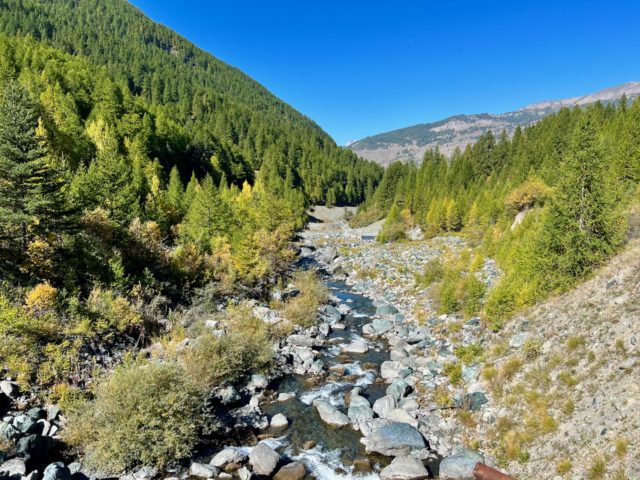
Orta San Giulio
From Val Chisone, I drove about 3 hours, first past Turin, then northwards to the province of Verbano-Cusio-Ossola in northern Piedmont. I decided to stop for lunch at the village of Orta San Giulio, a historic village on the shores of Lago d’Orta. Located on a forested promontory with stunning lake views, Orta San Giulio turned out to be a sure highlight of this trip!
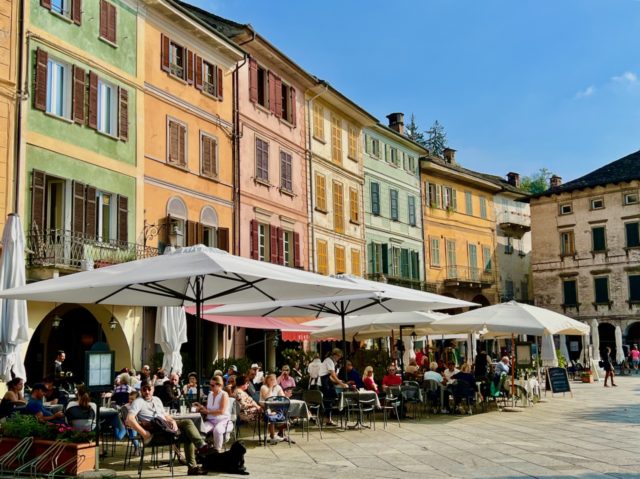
Facing the village lies the island of Isola San Giulio, home to a Benedictine monastery, which can be visited by boat from Orta San Giulio.
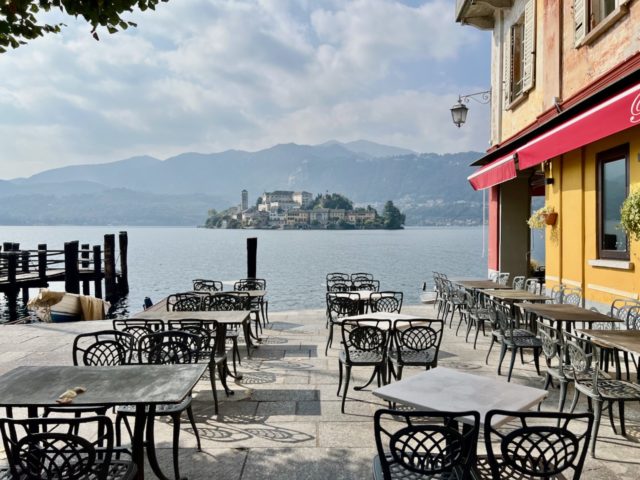
I’d only planned to stay in Orta San Giulio for a few hours, which was not enough to visit the island. Instead, I spent my time strolling around the village and enjoying lunch at the main square, Piazza Mario Motta.
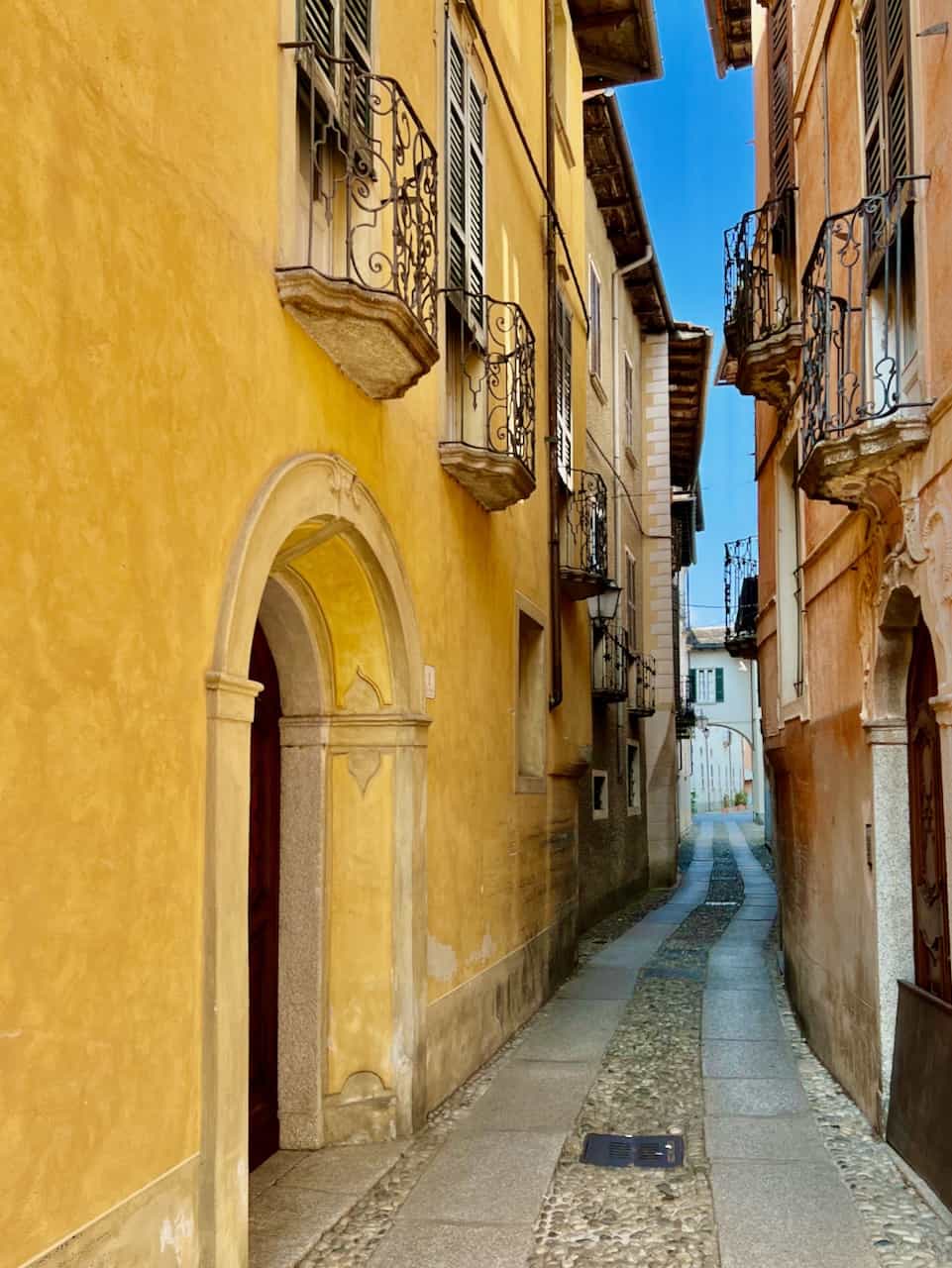
Another attraction is the nearby Sacro Monte di Orta, one of nine 17th century ‘sacred mounts’ or cavalries in Piedmont and Lombardy which are listed as UNESCO World Heritage sites. I later visited two other ‘sacred mounts’; in Domodossola and Crea (see below).
Before leaving the village, I made a quick stop at Villa Crespi, a 19th century palace in a Moorish-revival style. Now a luxury hotel, the villa’s ornate exterior, with its single minaret, is a wondrous sight!
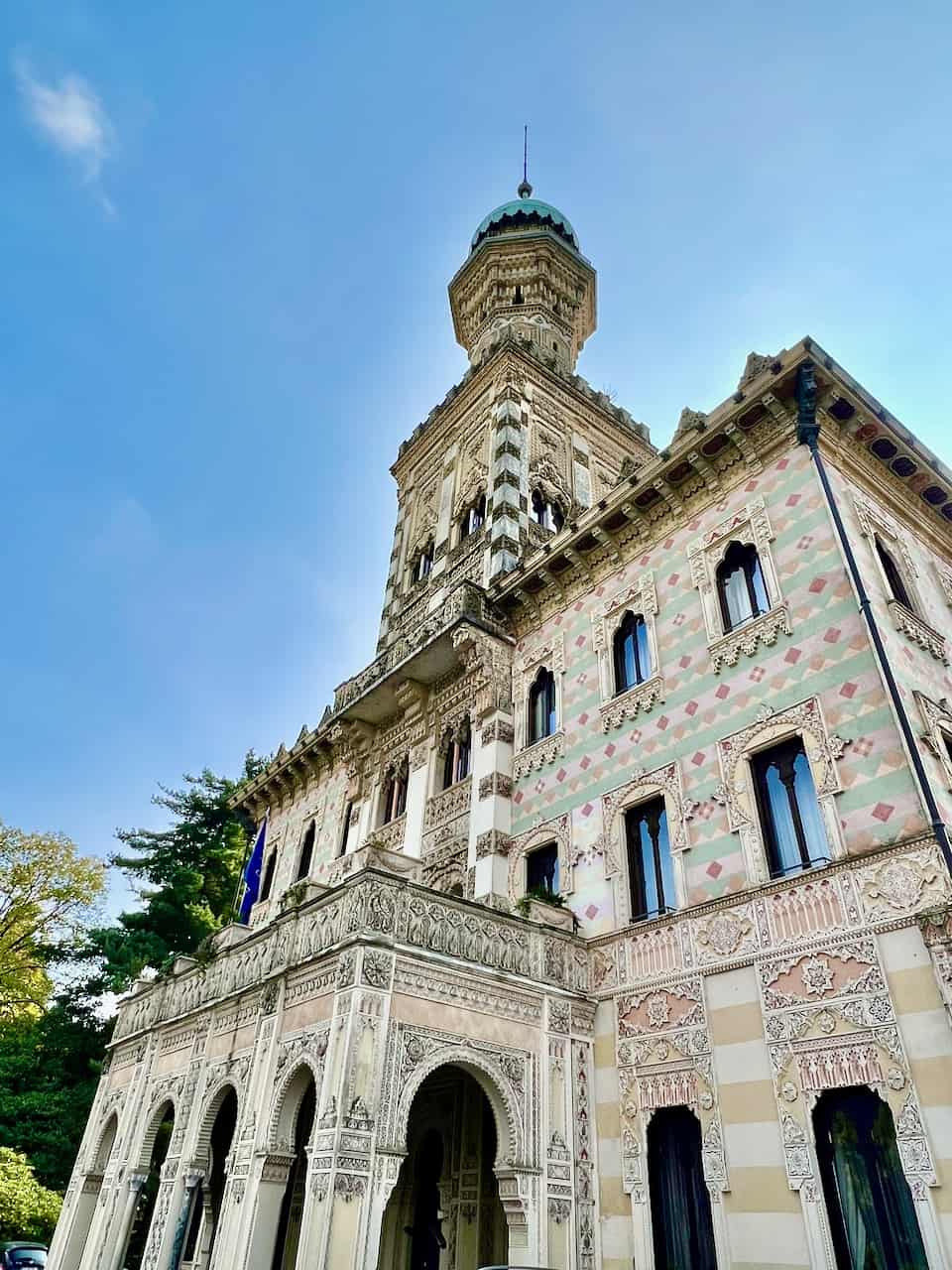
Verbano-Cusio-Ossola (northern Piedmont)
The province of Verbano-Cusio-Ossola in northern Piedmont is an area of huge, forest-clad mountains, gorgeous lakes and alluring towns and villages.
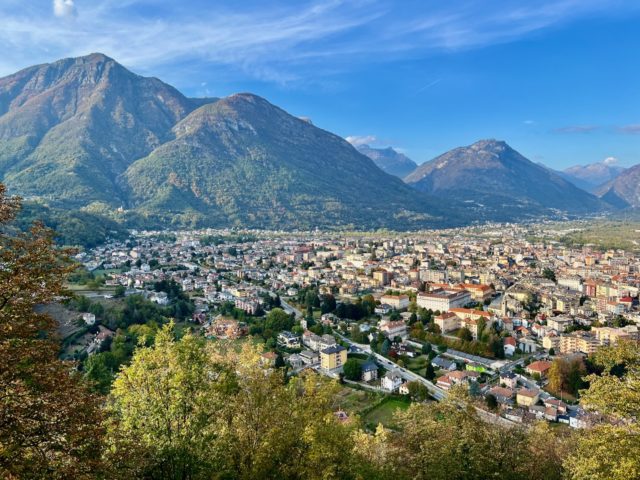
The most famous landmark in northern Piedmont is undoubtedly Lago Maggiore, but I soon found many historic, cultural and natural attractions west of the great lake. These are some of the most beautiful places I visited in northern Piedmont:
Domodossola
I made Domodossola, the largest and most important town in the province, my base for a few days and was delighted with my choice when I got there. I stayed in a spacious apartment with terrific views. Surrounded by mountains, it’s a bustling town with a well-preserved historic centre full of medieval houses and Renaissance-style palazzi. In addition, there’s a vibrant café scene and a large variety of restaurants and shops.
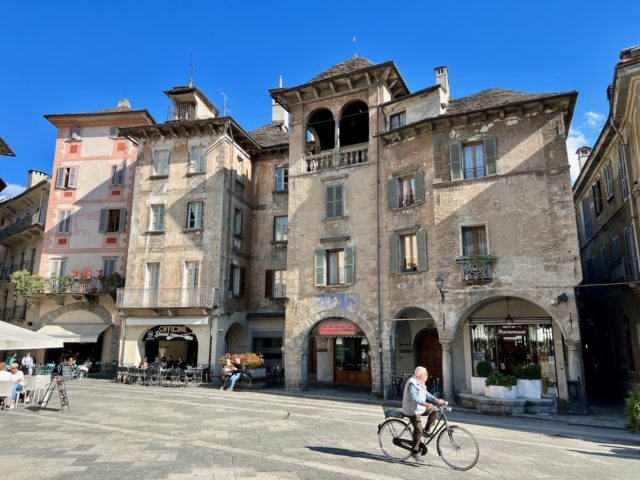
The focal point of the historic centre is the beautiful Piazza Mercato. I loved sitting at a terrace on Piazza Mercato to soak up the vibes. It’s a lively place, and on Sundays, the square and adjacent streets transform into a big outdoor market.
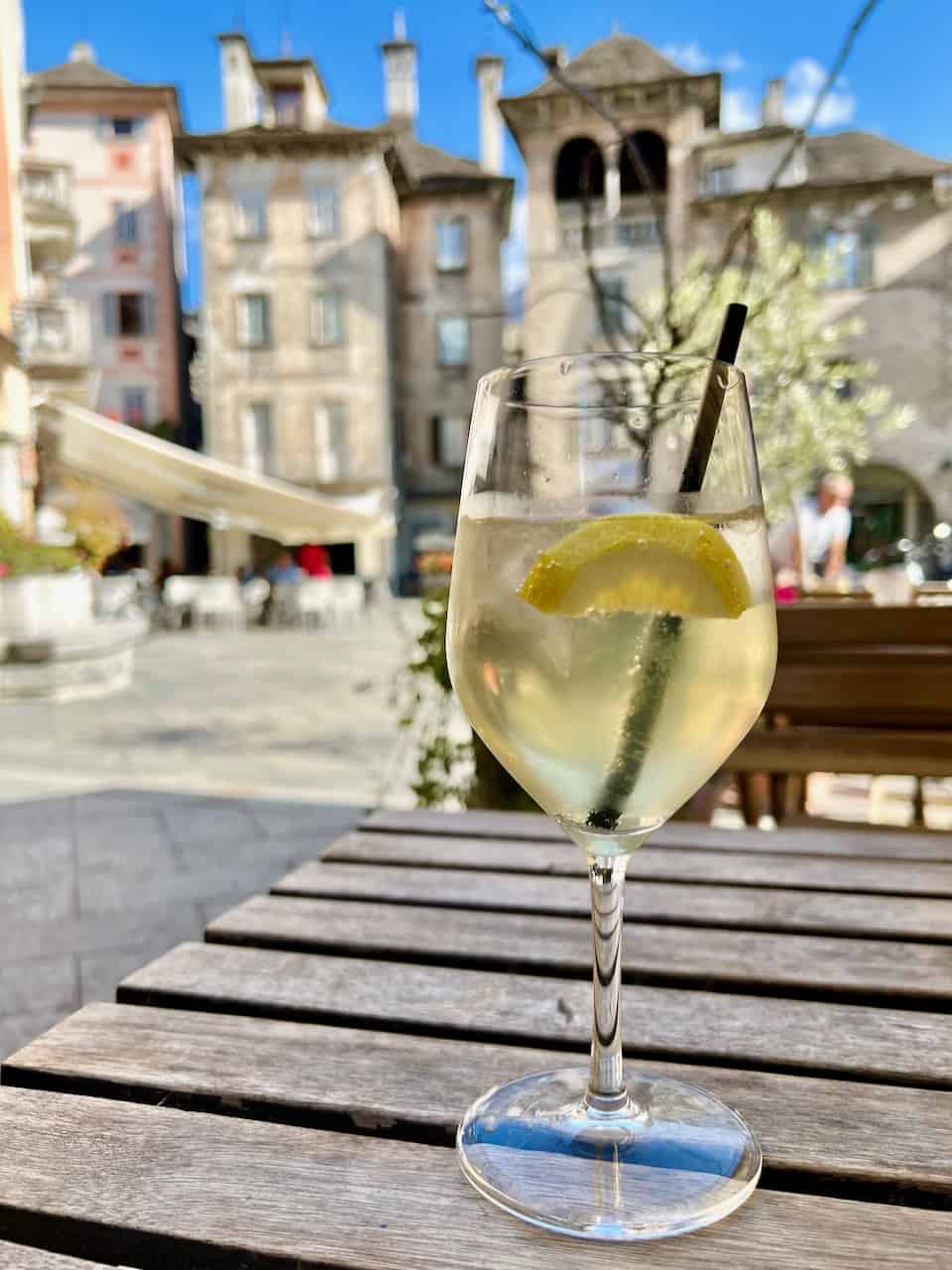
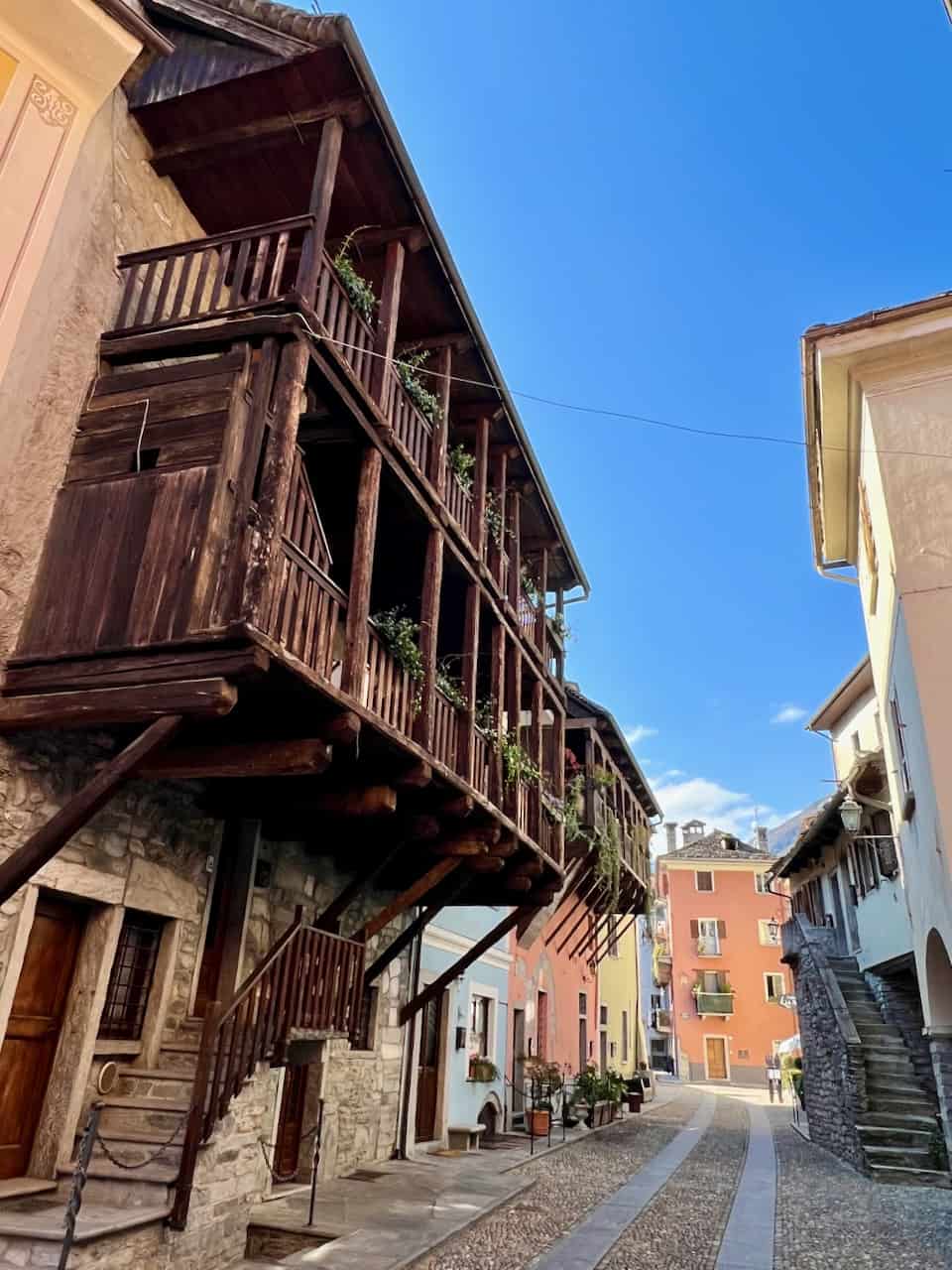
There are quite a lot of things to see in Domodossola such as the beautiful porticoes just off Piazza Mercato, various palaces such as Palazzo San Francesco (now an art museum), the historic houses in Via Fermo Carina, the medieval watch tower in Via Monte Grappa, and impressive churches such as Saint Gervasio & Protasio.
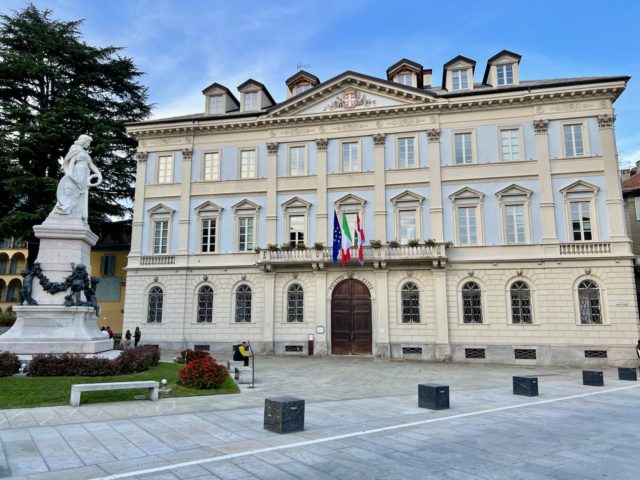
Another attraction is the Sacro Monte Calvario di Domodossola (Sacred Mount Calvary), one of the nine UNESCO Heritage listed ‘sacri monti’ (sacred mounts) in Piedmont and Lombardy (info). This 17th century calvary consists of a series of churches and chapels atop a hill overlooking the town. It was a steep climb to the calvary but the stunning frescoes in the chapels and amazing views made it absolutely worthwhile.
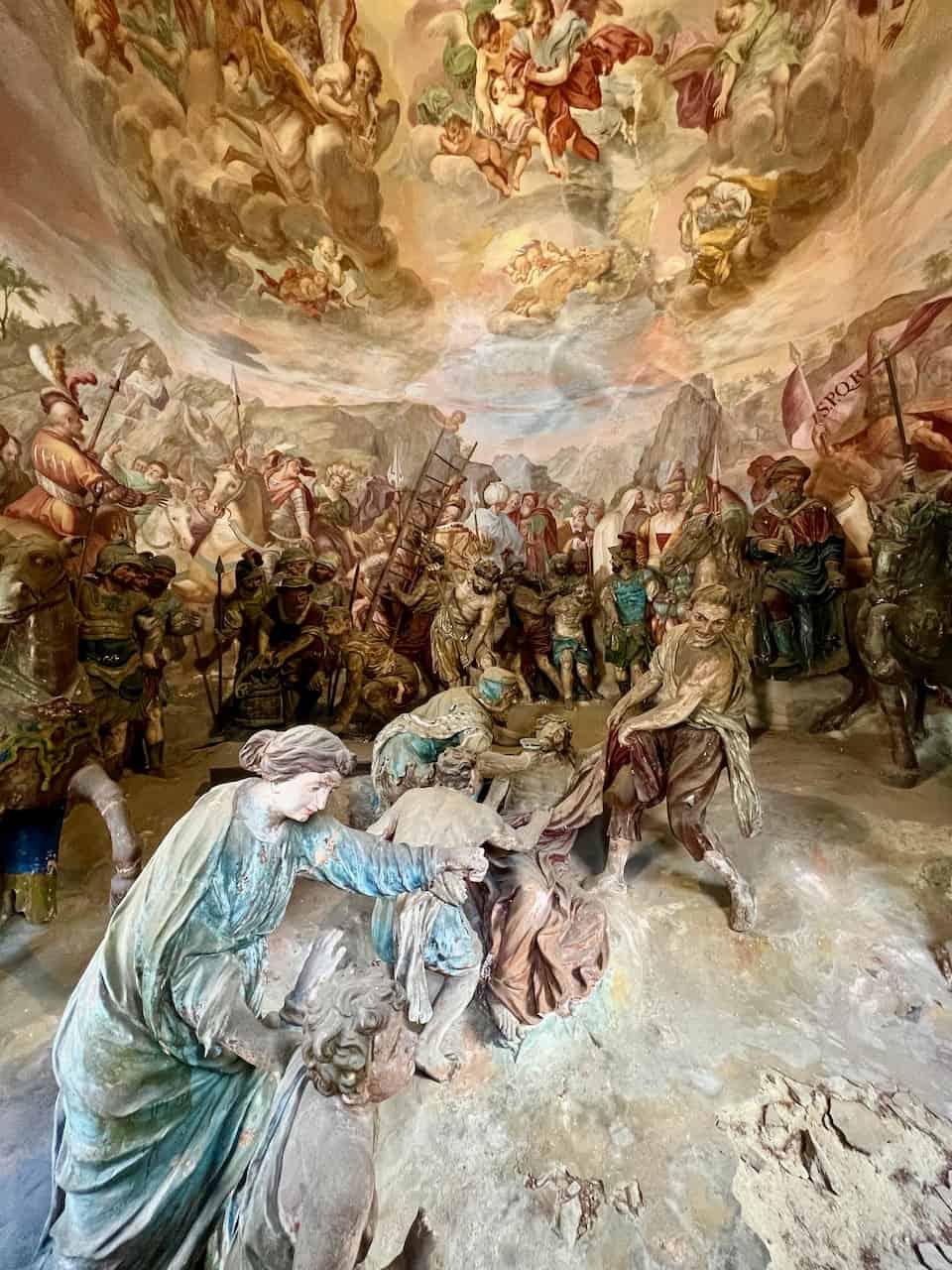
Vogogna
One afternoon, I hopped into the car for the 15-minute drive to Vogogna, the only village in the province which still has its 14th century medieval appearance intact. Backed by the Ossola mountains, and with a maze of quaint cobbled lanes and ancient buildings, Vogogna is very picturesque. Some of the places I visited included the atmospheric Piazzetta del Pozzo, Pretorio (a small Gothic palace), and the Visconti Castle, with its 14th century tower.
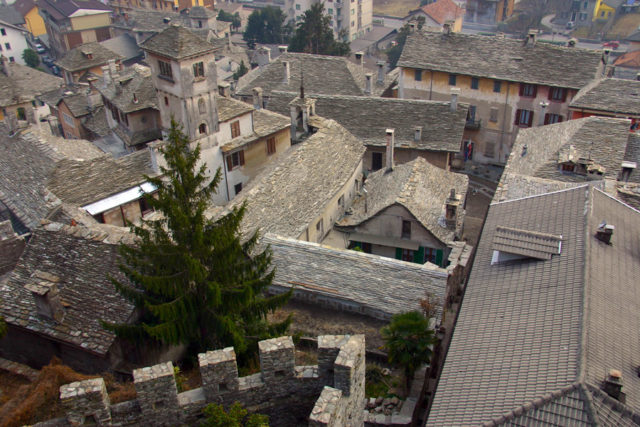
Vigezzina – Centovalli Railway
When I mentioned to a friend that I was going to Domodossola, she insisted I check out the Vigezzina – Centovalli Railway. This narrow-gauge train links Domodossola and Locarno in Switzerland. It’s a scenic ride that winds through the mountains, stopping along the way at various mountain villages.
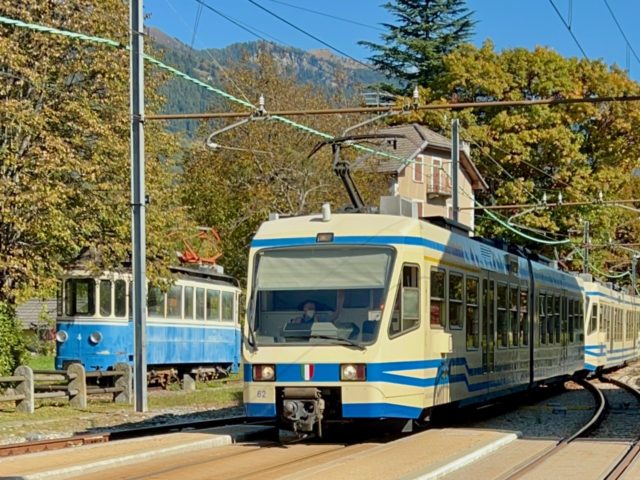
I booked a return trip to Santa Maria Maggiore, a 45-minute journey that’s packed with (cliff-hanging) twists and turns, tunnels and bridges. Along the way, we passed gorges, forests, rustic villages, farms and vineyards.
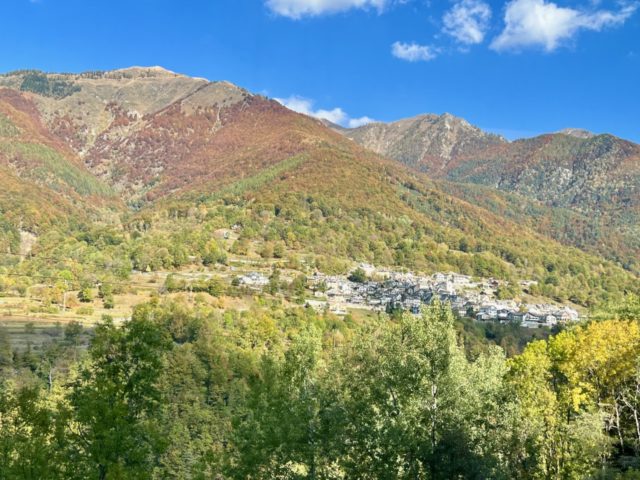
Santa Maria Maggiore
I disembarked at Santa Maria Maggiore and found a serene village with stately villas. The main attractions include the intriguing Museum of Chimney Sweeps (located in the beautiful Villa Antonia) and a small perfume museum, Casa del Profumo.
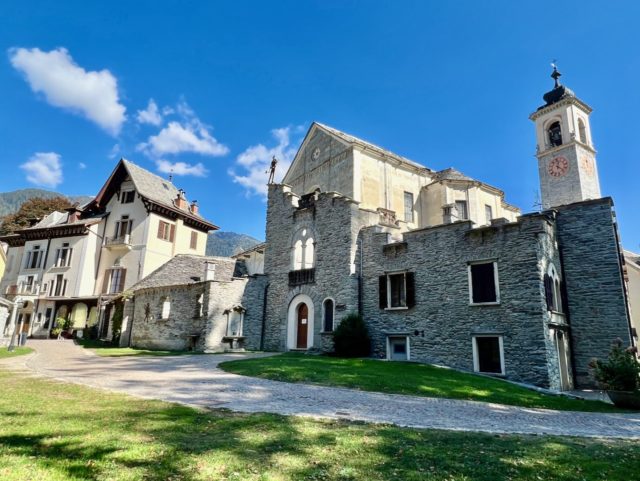
Mergozzo
I dedicated a full day to exploring places of interest around Lago Maggiore. My first stop was the village of Mergozzo. It’s setting, at the edge of a small lake (Lago di Mergozzo) and flanked by the forested slopes of Mont’Orfano, is simply stunning! The village itself is a gorgeous cluster of stone houses and charming alleys whilst the lake is a popular place for swimming, kayaking and stand-up paddling (as no motorised boats are allowed).
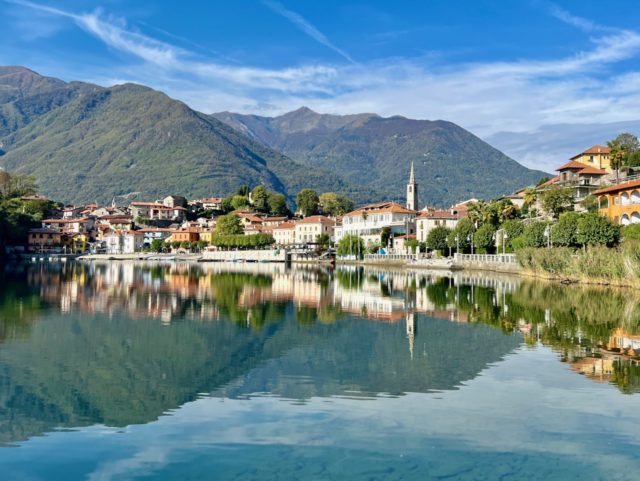
The historic attractions of Mergozzo include Santa Marta Church; the Parish Church of Santa Maria Assunta, with its beautiful 18th century ‘Colonnade of the Chapels’; and the Mergozzo Castle. I loved clambering around Mergozzo’s stepped lanes and discovering its hidden alleys. Tucked away in one of the alleys, I stumbled upon a little bakery that makes fugascina, a biscuit that’s only made in Mergozzo. I got to taste this absolutely delicious, buttery, crunchy biscuit and bought a few bags of it to bring home with me.
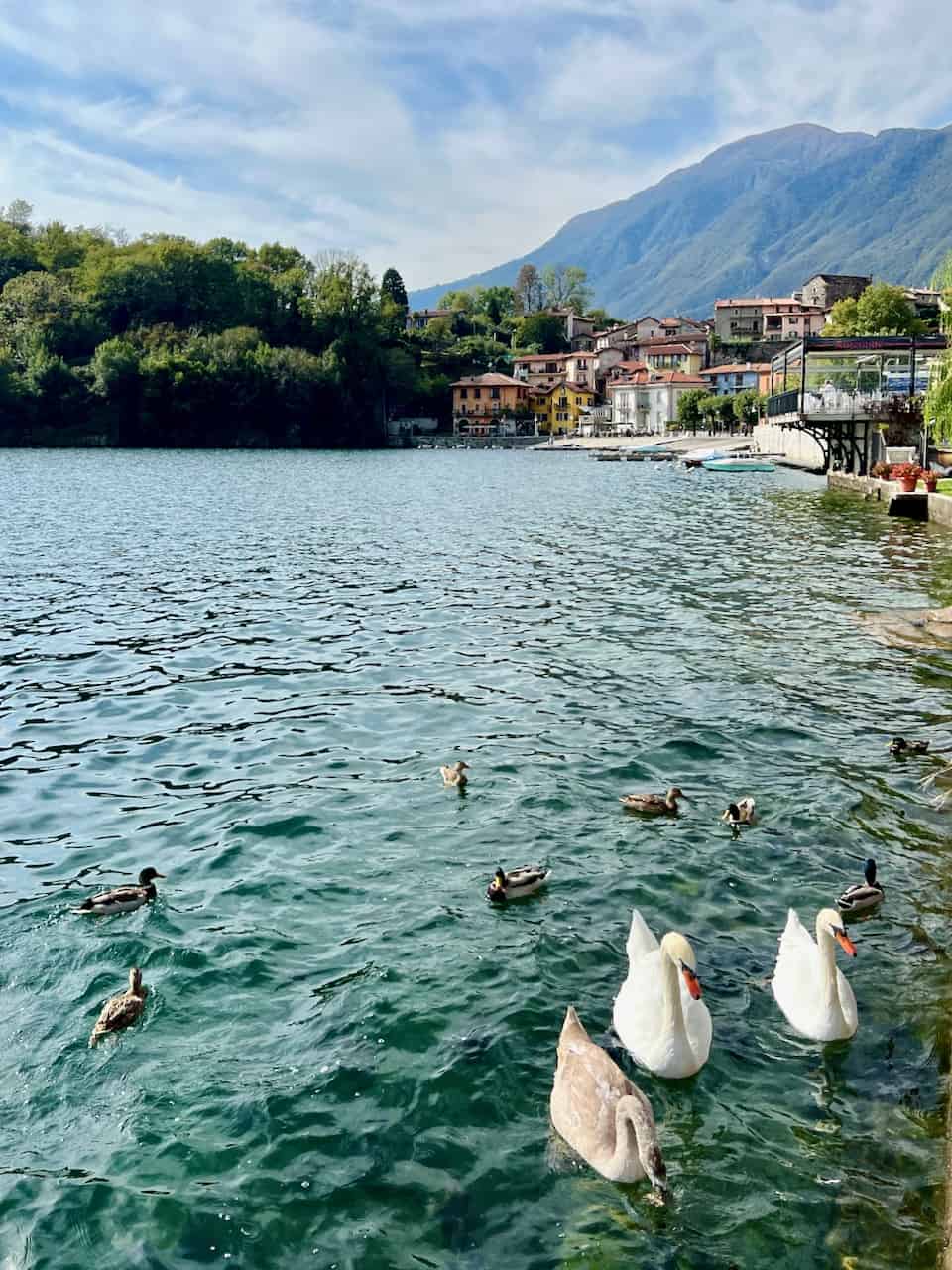
In Mergozzo, I learned about a hiking trail, called the Sentiero Azzurro, that winds its way through the forests and along the lakeshore to the hamlet of Montorfano. At the end of the trail in Montorfano, I visited the 11th century Romanesque church of San Giovanni Battista.
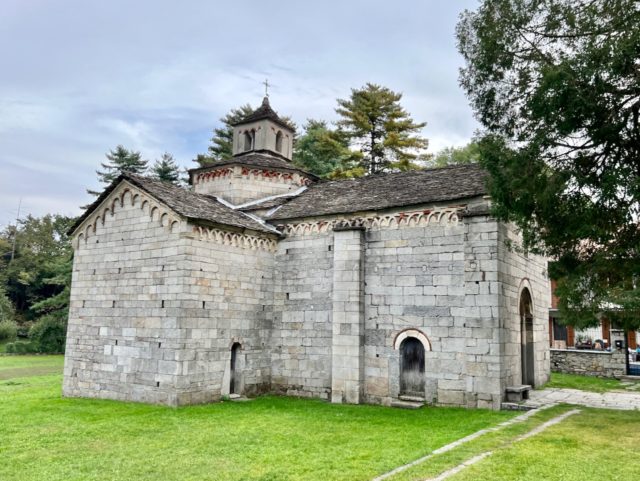
Stresa
After a delicious lakeside lunch in Mergozzo, I continued along the shores of Lago Maggiore. It was a short but very scenic drive and I soon arrived in Stresa, a lakeside town that faces the Borromean Islands. I found a parking spot and went for a walk along the waterfront. The stretch called the ‘Panoramic Walk‘ had marvellous views of Lago Maggiore and the Borromean Islands.
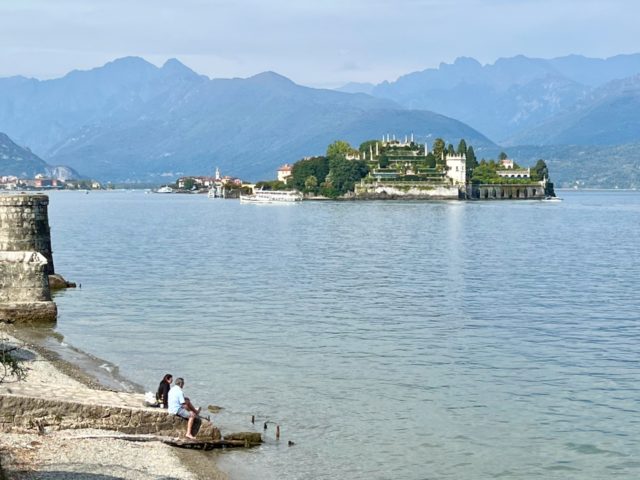
In the 19th century, Stresa was transformed from a sleepy fishing village into a glamorous resort town for European aristocrats. Much of this glamour can still be seen today in its historic hotels and opulent 19th century villas such as the Grand Hotel Des Iles Borromee (a palatial Art Nouveau hotel), Regina Palace Hotel, and the elegant Palazzo Bolongaro.
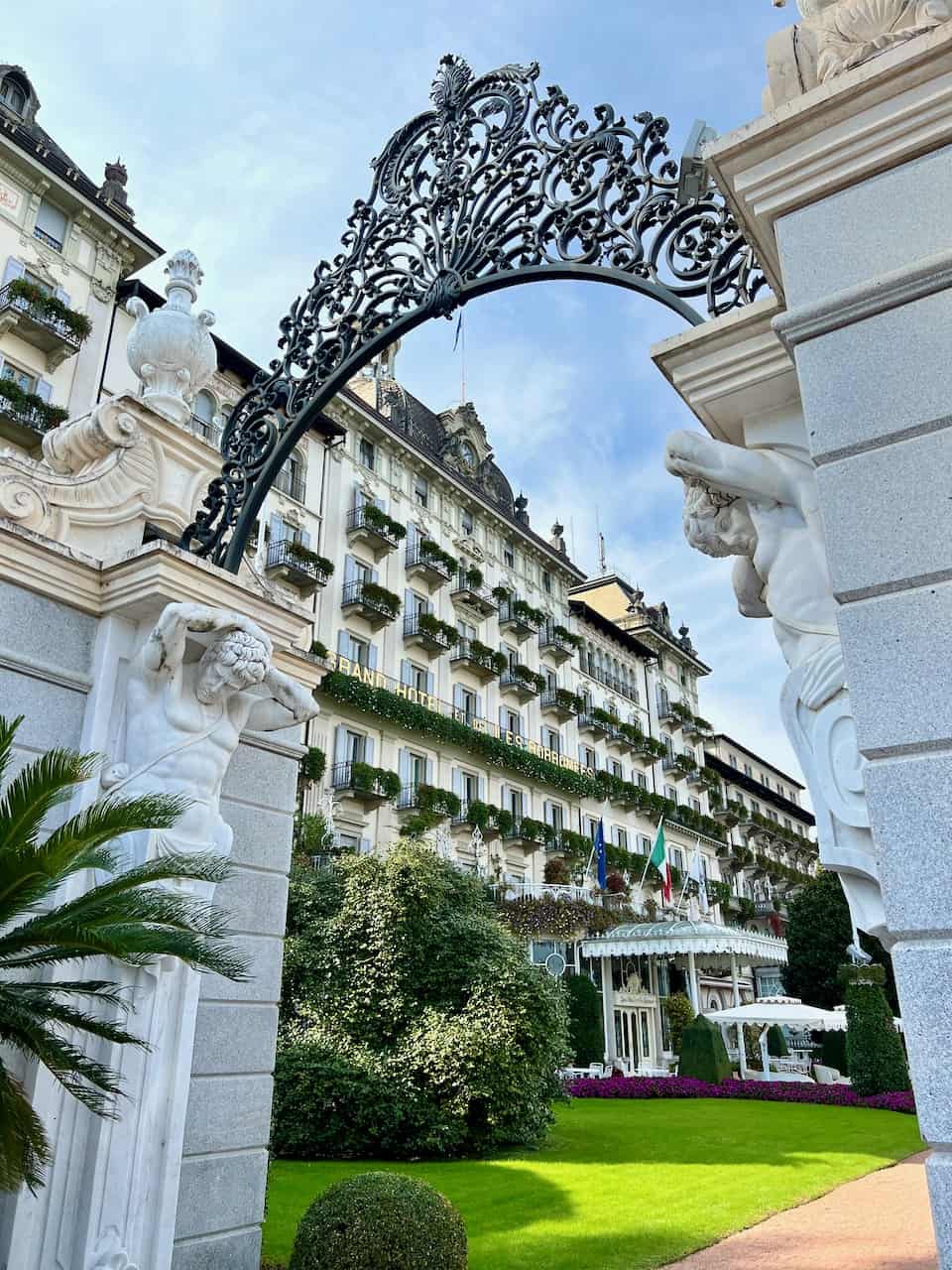
Villa Taranto Botanical Gardens
I ended my day trip to Lago Maggiore with a walk around the Botanical Gardens of Villa Taranto (info) in the town of Verbania. These historic gardens were created by the Scottish Captain McEacharn in 1931 and are famous for its rich diversity of plants and trees.
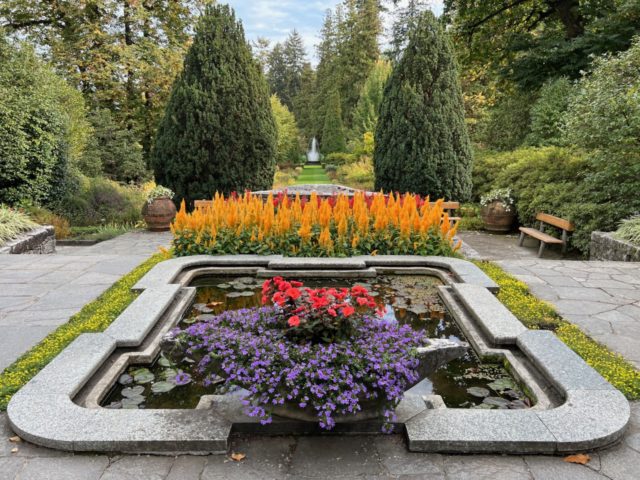
Monferrato
The last leg of my Piedmont road trip brought me to Monferrato, about a 1.5-hour drive from Domodossola. I was especially looking forward to this part of the trip as I’d heard so many accounts of its dreamy landscapes, and amazing food and wines! It’s such a beautiful area that UNESCO declared the landscapes of Monferrato a World Heritage site in 2014! Monferrato is divided in two geographical areas: Basso Monferrato (Lower Monferrato) and Alto Monferrato (Upper Monferrato). Here are some of the most beautiful places to visit in Monferrato just south of the Po River in the province of Alessandria:
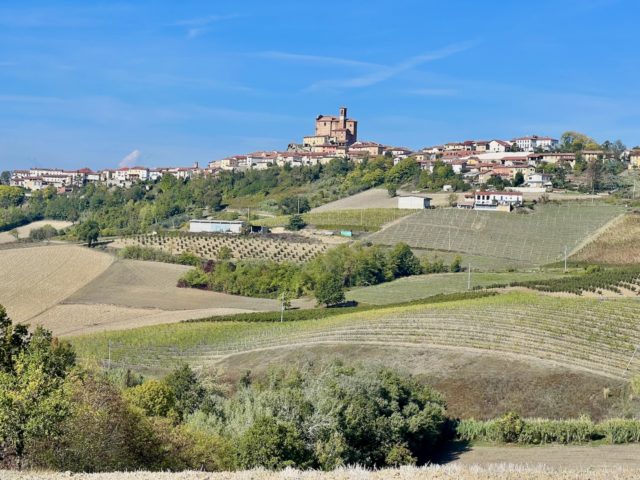
Cella Monte
The first village I visited in Monferrato was Cella Monte where I had an unforgettable introduction to the area’s wonderfully friendly people and their glorious food and wines!
Before entering the village, I noticed a sign pointing to Agriturismo La Fontanella (info). I was famished so I decided to head there for a quick lunch. I didn’t have a reservation, and despite being full, the kind owners offered me a table on the terrace. What followed was a four-course culinary experience (with multiple second servings) I will not easily forget! The family spoiled me with simply outstanding food and wine from their estate, all served with big, happy smiles. The agnolotti and vitello tonnato, typical Piedmontese specialties, were some of the best I’ve ever had!
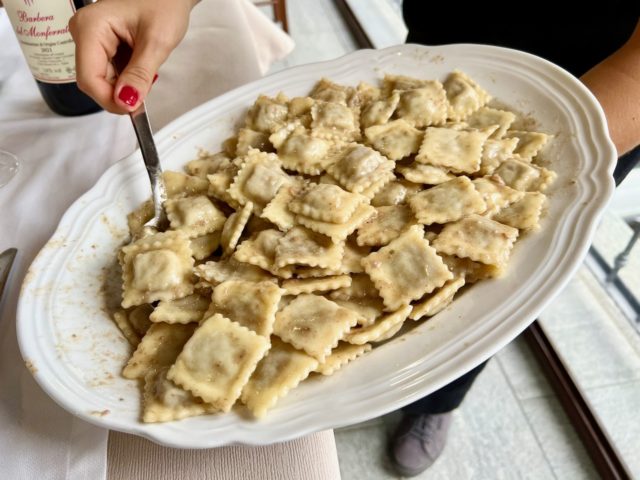
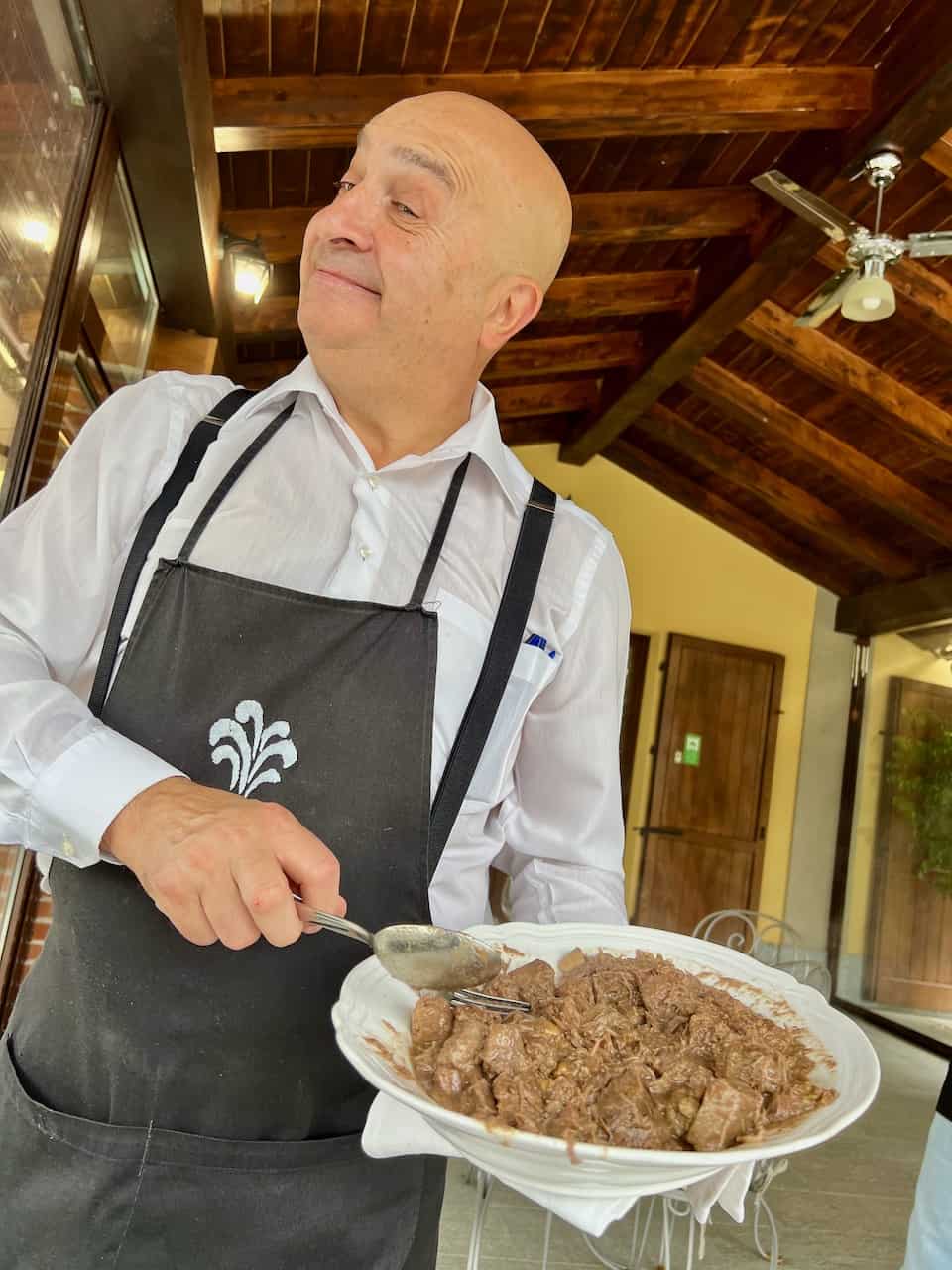
The next day, I returned to Cella Monte and found a medieval village with cobbled streets, ancient manor houses, hidden courtyards and quiet lanes. As I walked around, I noticed the haphazard mix of stone, bricks and mortar in the walls.
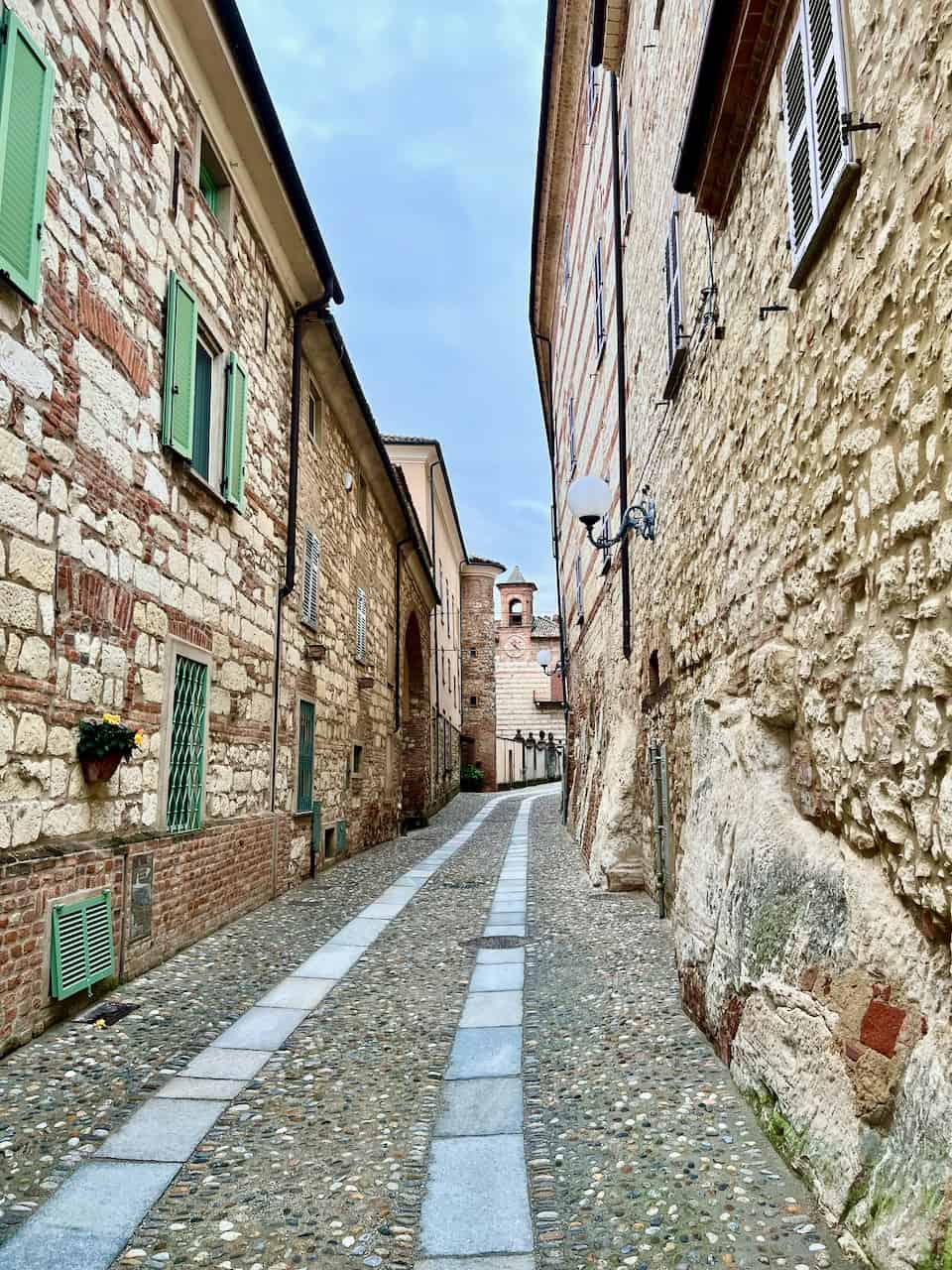
I later learned at the village’s Ecomuseo della Pietra da Cantoni (info) about pietra da cantoni, a type of sandstone that can be found throughout the Monferrato area. Through the centuries, the locals dug into the soft sandstone to create cellars, storage rooms and tunnels called infernot. These infernot can still be seen in many villages and wineries.
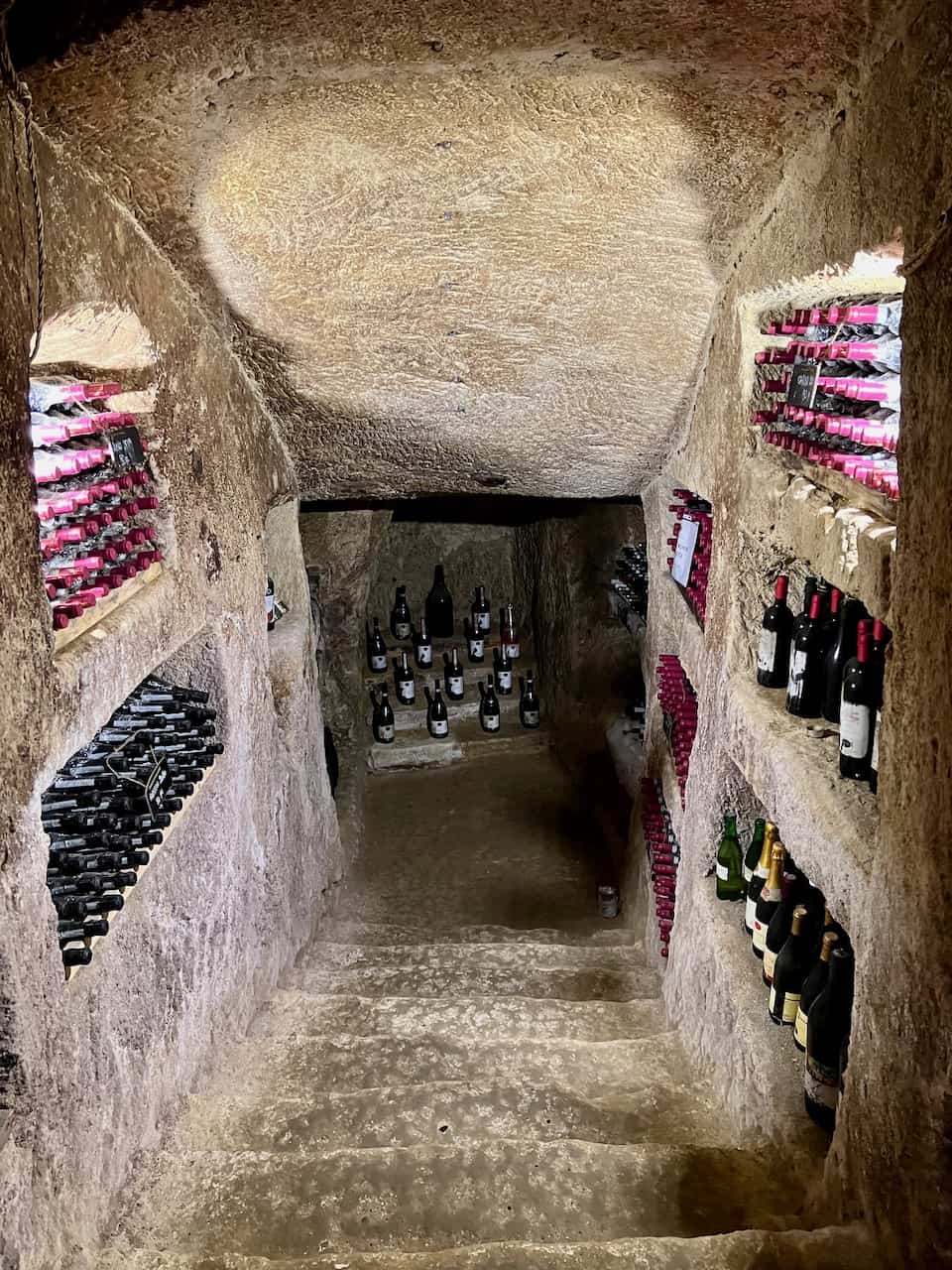
In the historic centre of Cella Monte, I stumbled upon a winery called Cinque Quinti (info), located in a striking manor house. Curious about this place, I knocked on the door. The owner invited me in and we toured the winery and its infernot. After the tour, I had a delicious wine-tasting in the courtyard.
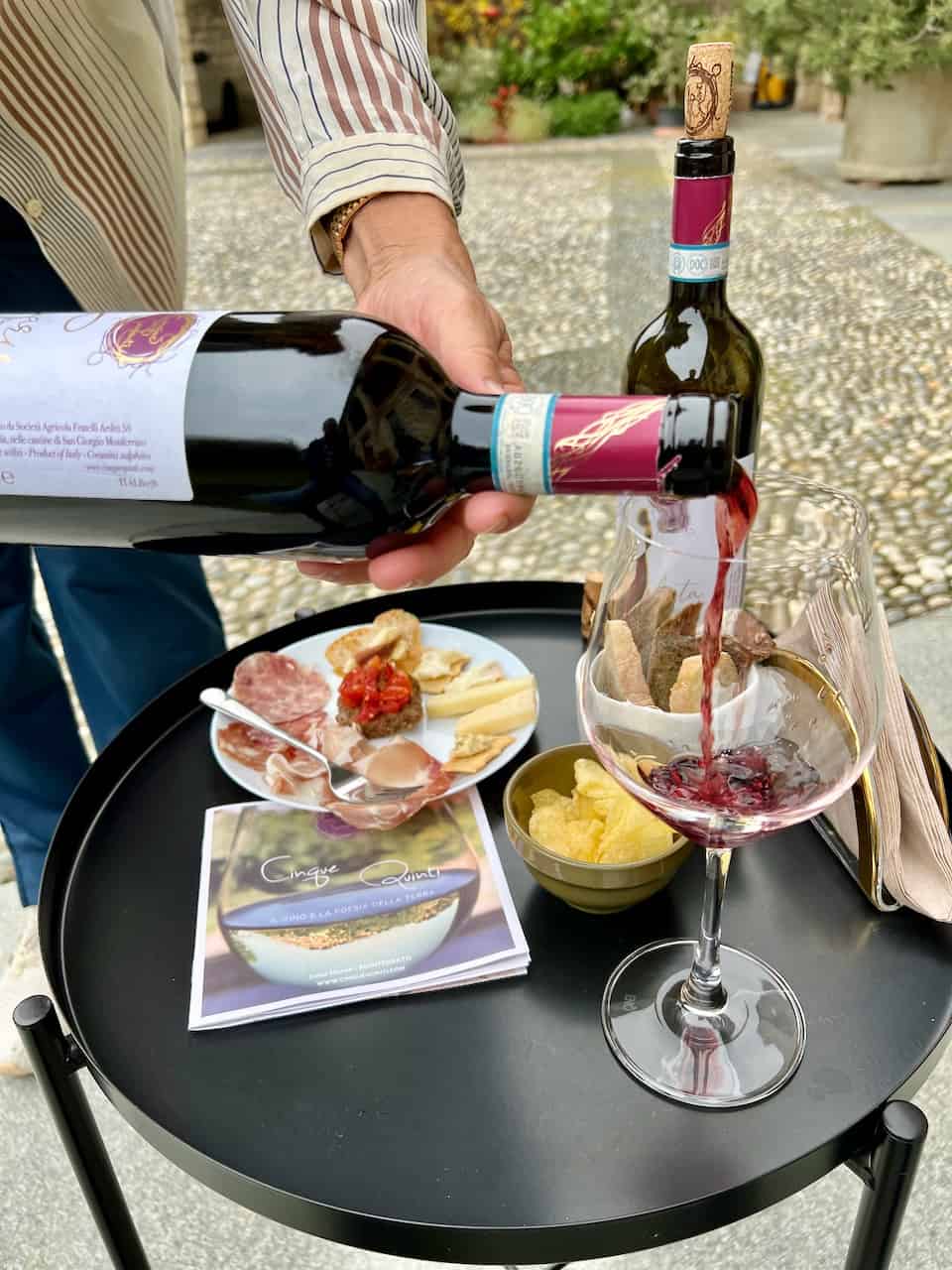
Ozzano Monferrato
Ozzano Monferrato was my base for a few days as I explored the area. I stayed in the gorgeous La Corte Delle 4 Stagioni, a B&B located in a historic manor with expansive gardens.
It was in Ozzano Monferrato that I first heard about the ‘balconies’ of the Monferrato villages. Situated on hilltops, many of the villages have ‘balconies’ or panoramic viewpoints. As I clambered around the cobbled slopes of Ozzano Monferrato to the castle, I found a gorgeous viewpoint in front of the St. Salvador church. During my stay, I discovered several other ‘balconies’ with amazing vistas of the Monferrato landscapes.
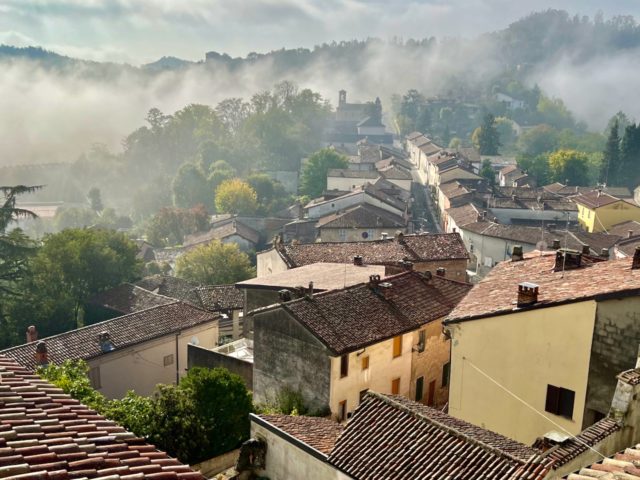
There are numerous wineries around Ozzano Monferrato such as the Angelini Paolo winery but my favourite experience was at Cantine Valpane (info).
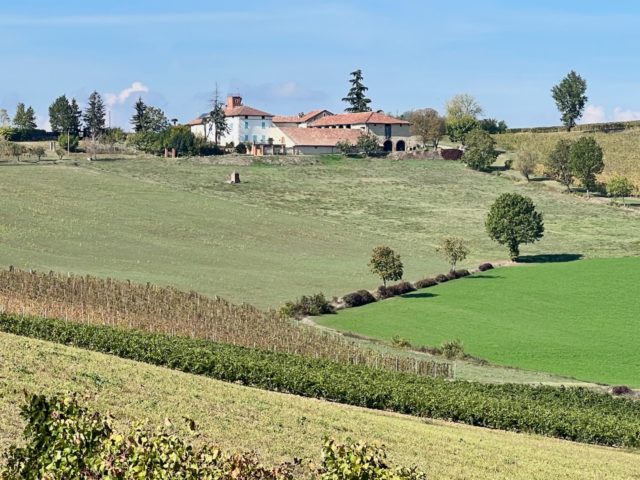
The wine-maker, Pietro, and his brother-in-law, Roberto, welcomed me in when I arrived. After touring the historic winery, they sat me down for a fabulous wine tasting.
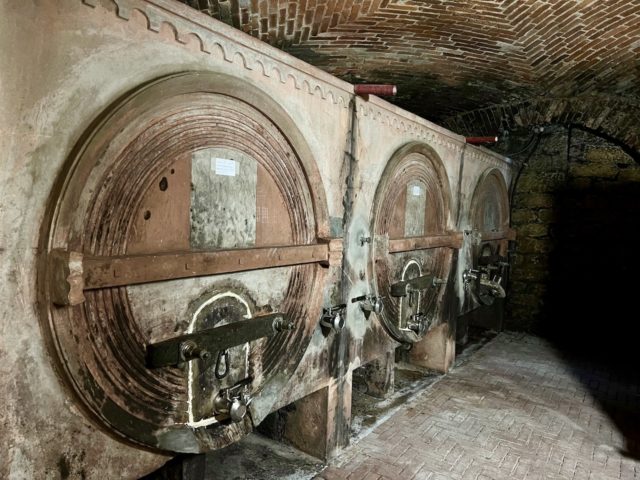
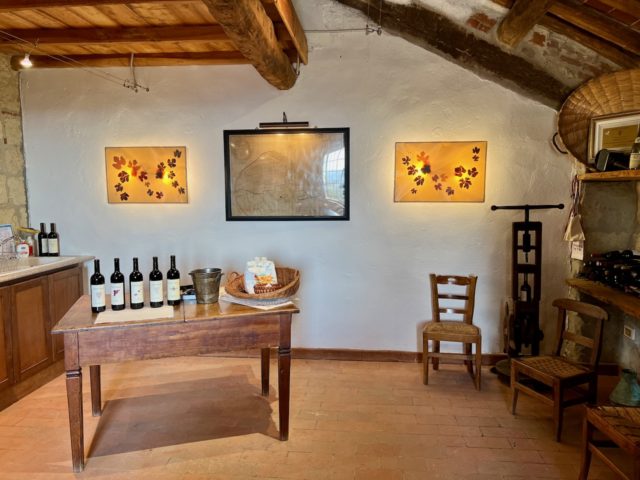
The wines were absolutely sublime! I was especially entranced by the local variety, Grignolino del Monferrato Casalese. Its colour, a translucent crimson, like liquid rubies, was simply mesmerising. The Barbera del Monferrato was just as extraordinary, with a fragrant bouquet and exuberant notes of red fruits.
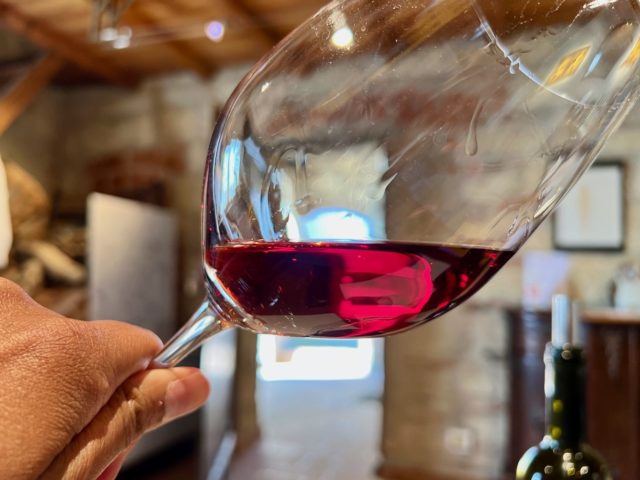
A restaurant in this area I can absolutely recommend is Antichi Sapori (info), in nearby Sala Monferrato. They serve terrific local specialties at very reasonable prices.
Sacro Monte di Crea
About a 15-minute drive from Ozzano Monferrato lies the majestic Sacro Monte di Crea (Sacred Mountain of Crea), the third of nine UNESCO World Heritage listed sacred mounts that I visited on this trip. It was a foggy morning but my stroll around the churches and chapels atop the forest-clad mountain was simply enchanting. The highlight was the ‘Paradise Chapel’ with its rather haunting statues and frescoes.
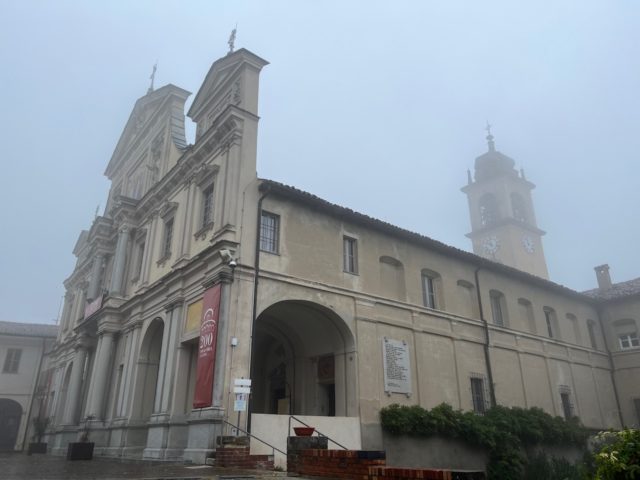
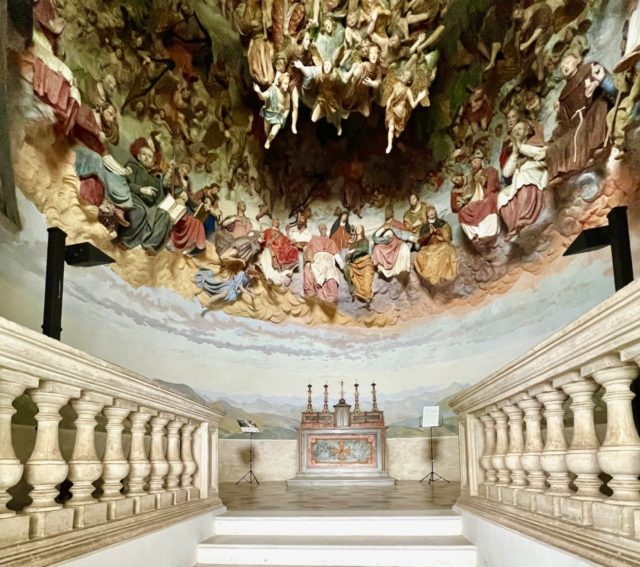
Treville
I first noticed Treville on my way back to Ozzano Monferrato one evening during sunset. I pulled over to take in the view of the hills cast in a warm, orangey glow. In the distance, I noticed a village topped by a pompous-looking structure, like a beacon overlooking the area. A quick check on Google Maps revealed that this was the village of Treville.
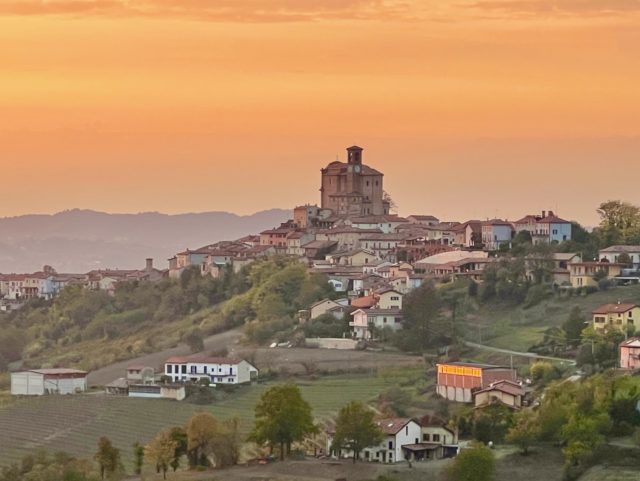
I made it a point to visit Treville the next day. Just a 5-minute drive from Ozzano Monferrato, I found a lovely village topped by the imposing Sant’Ambrogio church. I also found another ‘balcony’ here with stunning views. On clear days, the entire range of the Italian Alps can be seen from this balcony!
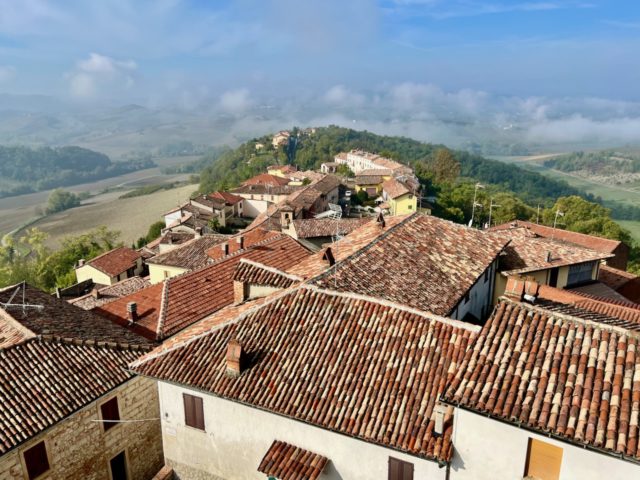
Rosignano Monferrato
Across the valley from Cella Monte lies the village of Rosignano Monferrato. The Capoluogo or ‘Chief Village’ atop the hill is a maze of ancient streets and historic monuments. The main sights include the 12th century Romanesque Church of Sant’Antonio, the Town Hall with its infernot (open to the public) and the 15th century San Vittore Church. Rosignano also has several ‘balconies’ scattered around the village, with some pretty spectacular views.
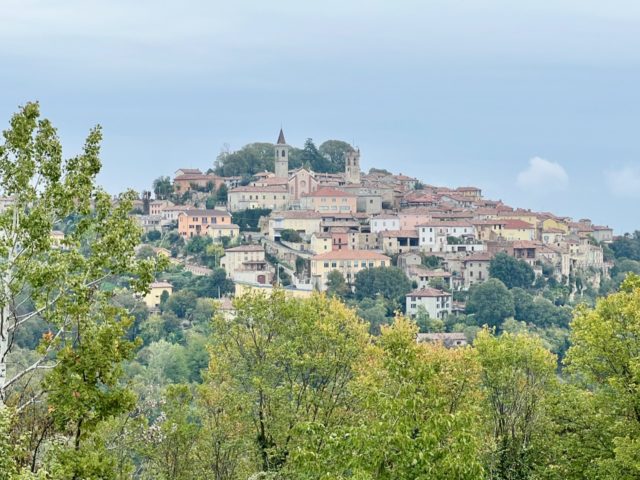
Casale Monferrato
Casale Monferrato lies on the banks of the River Po and has a rich history dating back to Roman times. Exploring this beautiful town one afternoon was another highlight of my trip around Monferrato. I discovered many things to do in Casale Monferrato and kicked myself for not allocating more time for my visit.
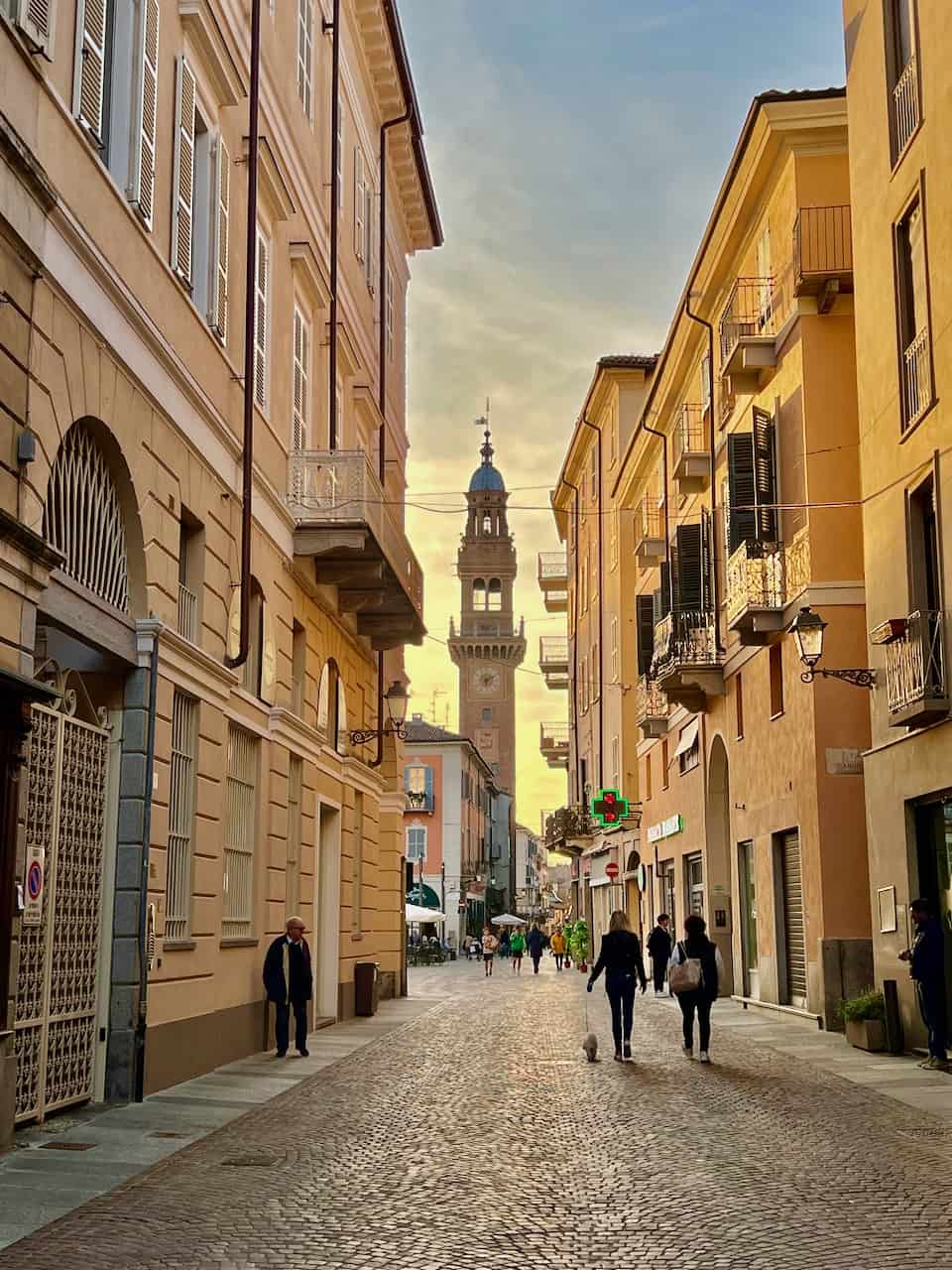
I started my walk at the Castello, a formidable 15th century hexagonal structure surrounded by a moat. Across the road stands the beautiful Baroque-style Santa Caterina church.
From there, I entered the historic centre through the Via Aurelio Saffi. The Civic Tower, which has its origins in the 11th century, stands prominently on one side of the street. Further up, the street leads to Piazza Mazzini, the main square, and continues to the breathtaking Cathedral. Founded in the 8th century, the Cathedral was rebuilt in the 12th century in a beautiful Romanesque style.
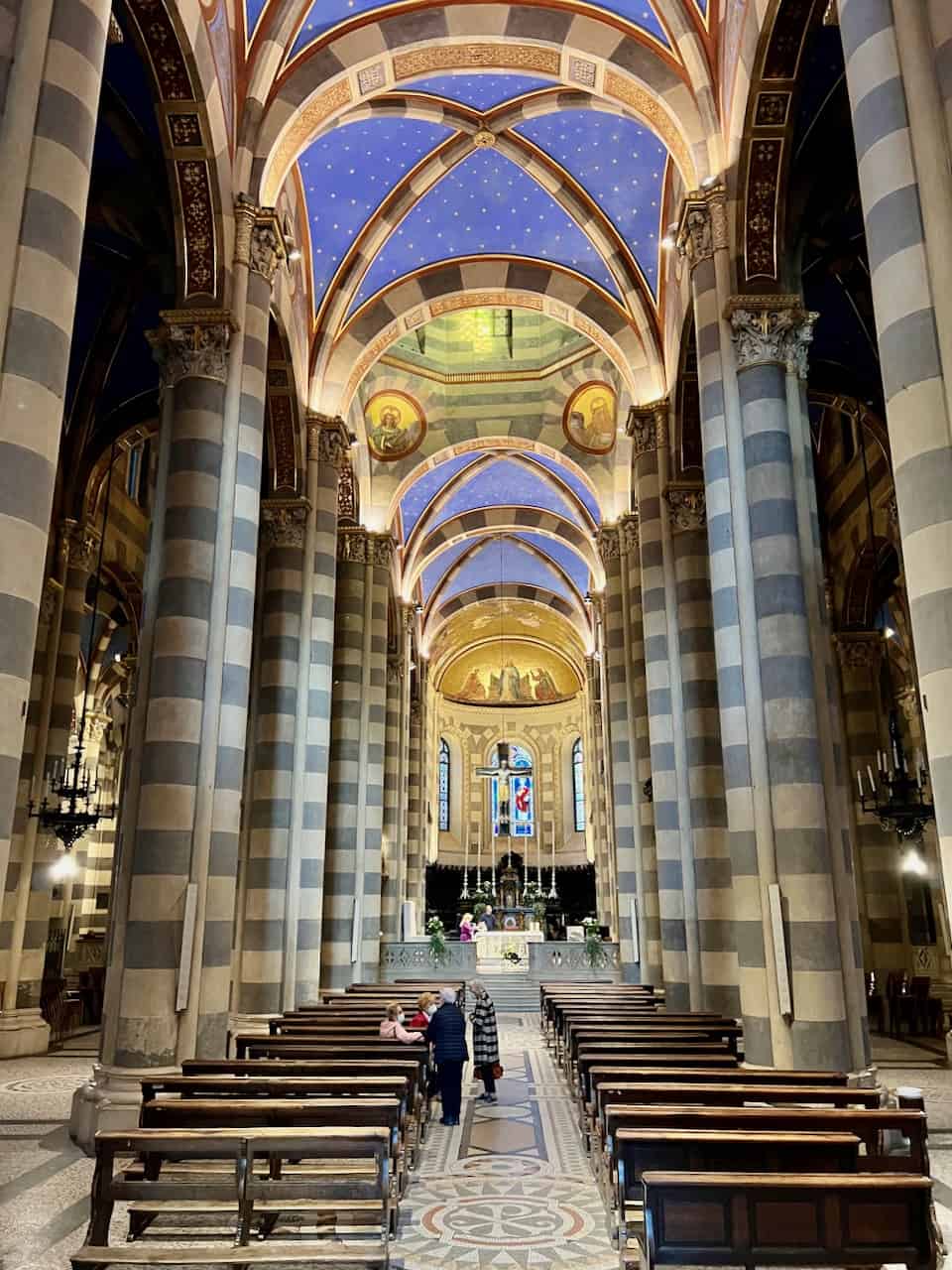
Another top historic sight is the 16th century Synagogue, which is reputed to be one of Europe’s finest. Tucked away in an alley, the Synagogue has a plain exterior but inside (book in advance), I found an exquisite Baroque interior with elaborate carvings and paintings.
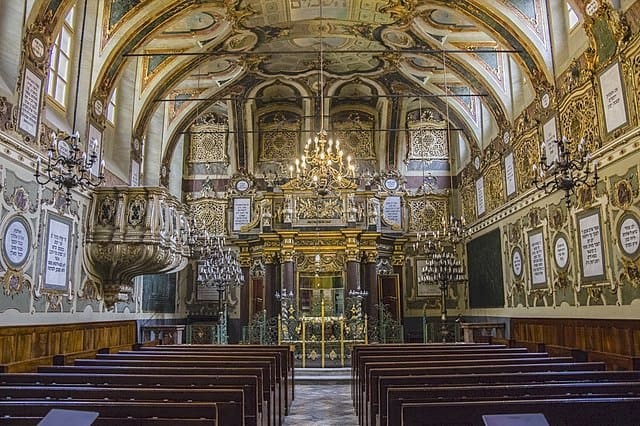
I loved strolling around Casale’s beautiful streets, such as Via Roma, with its elegant porticoes and the striking neo-Classical façade of Santa Croce. Another gorgeous street is Via Goffredo Mameli, with its palaces such as the Palazzo Gozani di Treville and the Palazzo Gozani di San Giorgio, now the Town Hall.
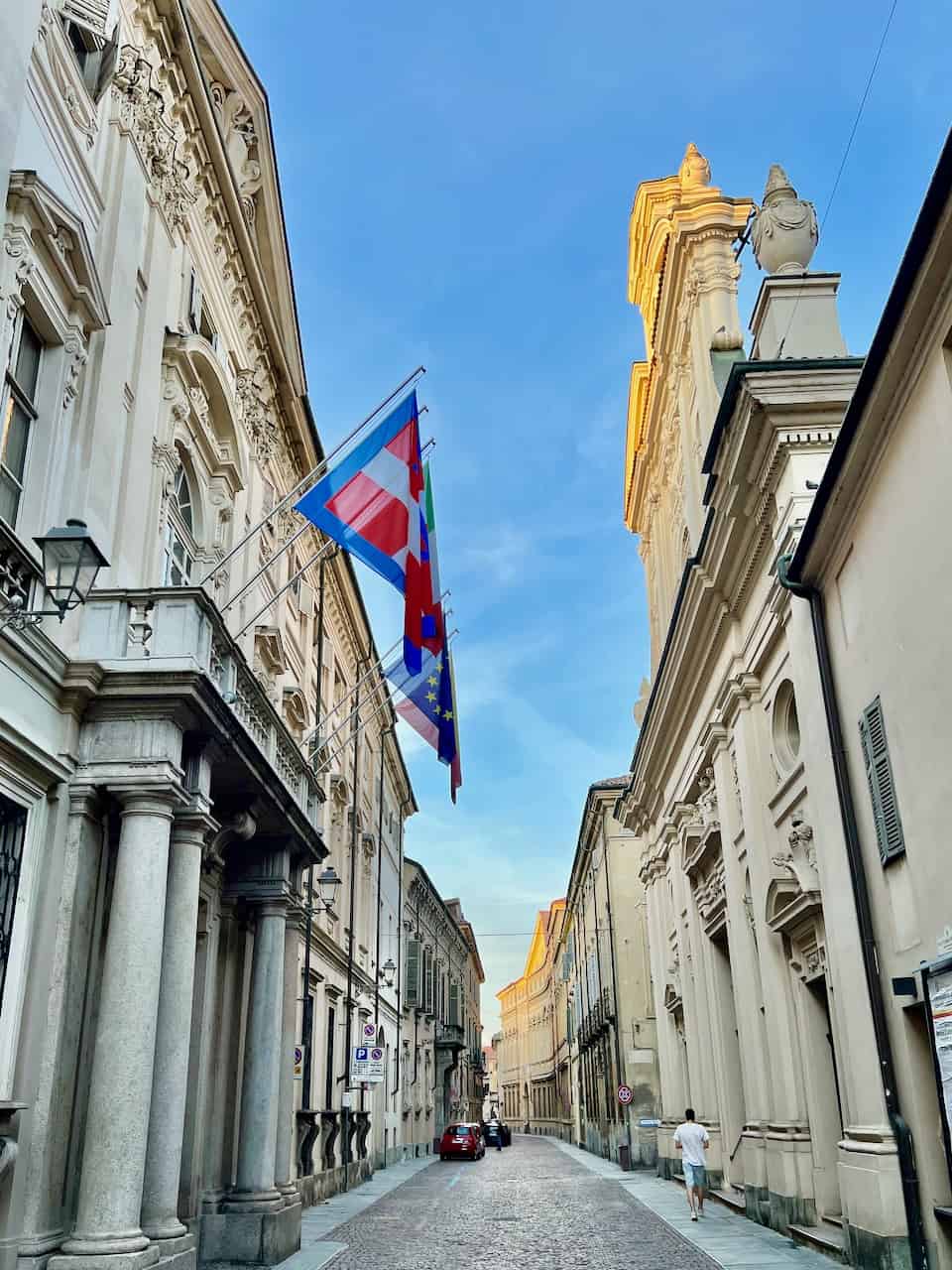
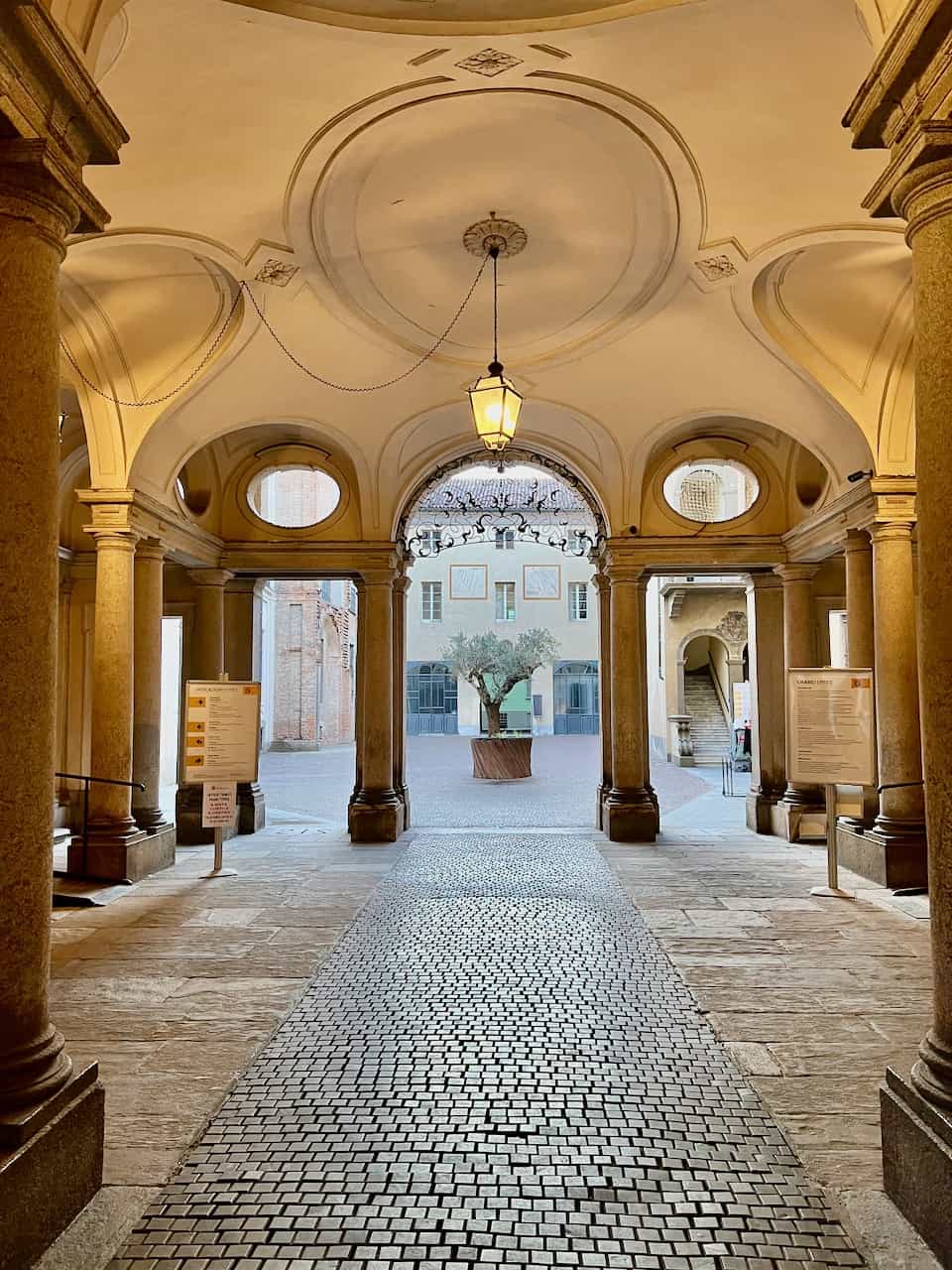
I had dinner at the Accademia restaurant (info) inside Palazzo Gozani di Treville, which gave me the opportunity to see the palazzo’s gorgeous Rococo atrium and frescoed rooms.
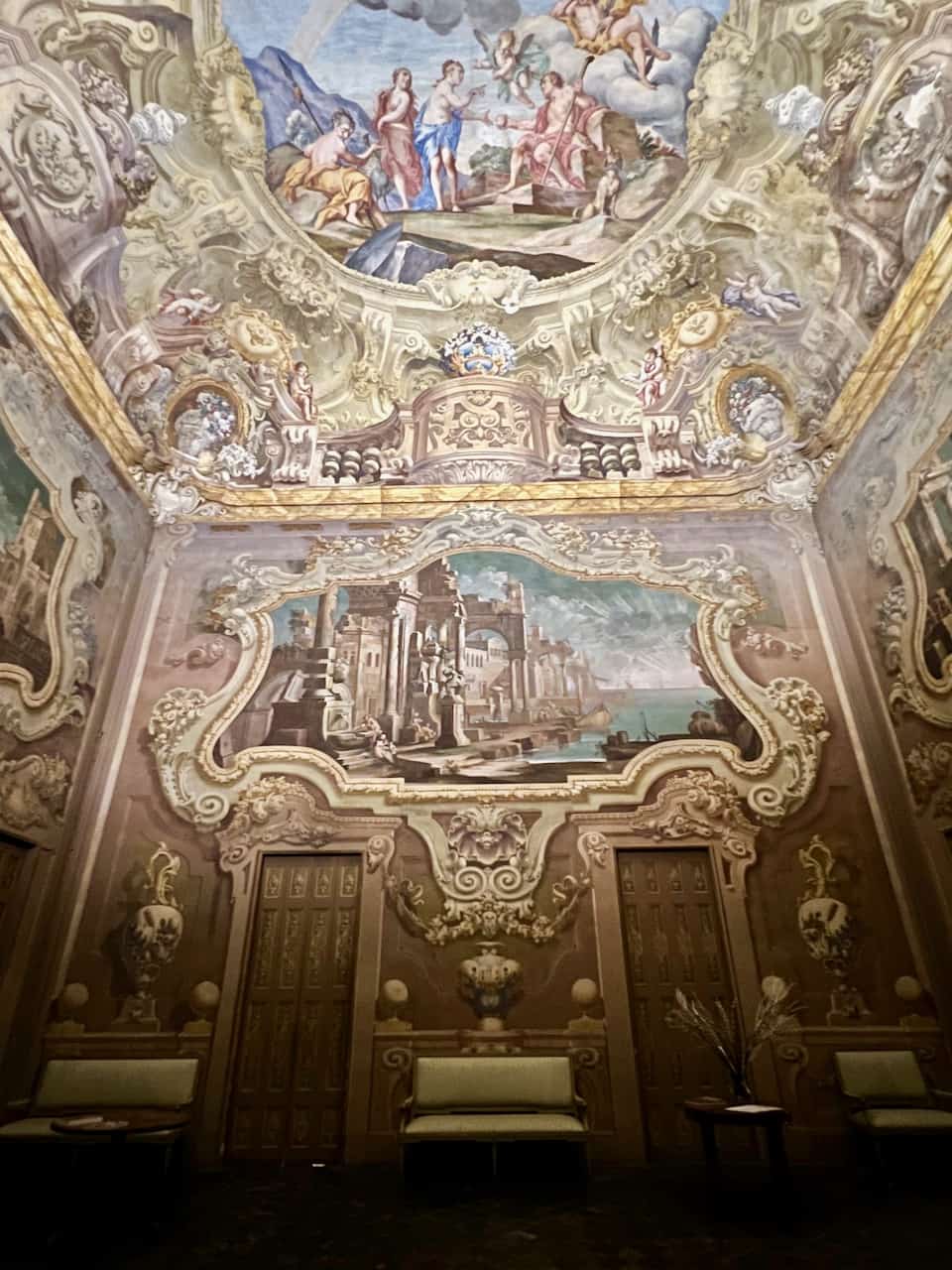
From the Monferrato area, I returned to Turin for my trip home. This Piedmont road trip was absolutely amazing. I only covered a small portion of the region so I’m very sure I’ll return soon!
How to get to Piedmont
Piedmont’s largest city, Turin, is a regional rail and air hub, with connections to major cities in Europe. Turin is about a 1.5-hour flight from Amsterdam (check flights). Piedmont is also easily accessible from Milan by rail and road. To get to the smaller villages and nature parks mentioned in this guide, and for more convenience, I recommend hiring a car.
Visit my Travel Resources page to plan your trip.
Looking for more lesser-known places and villages in Italy to visit? Check out the free Viaggio Italiano e-book.
Note: This Piedmont road trip guide was written in collaboration with iambassador for the ‘Viaggio Italiano’ Project (Italian National Tourist Board, Ministry of Tourism & Conference of Regions and Autonomous Provinces).

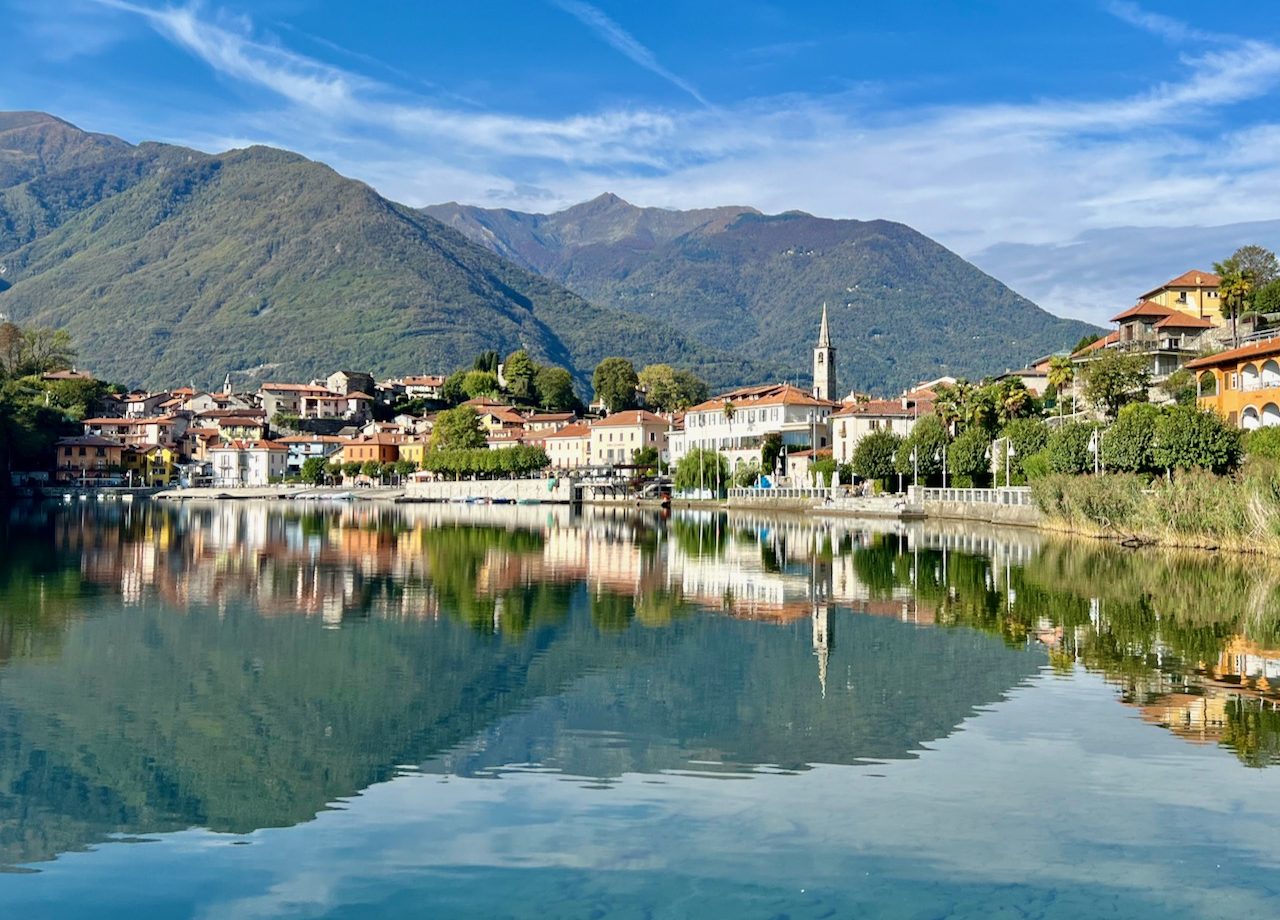


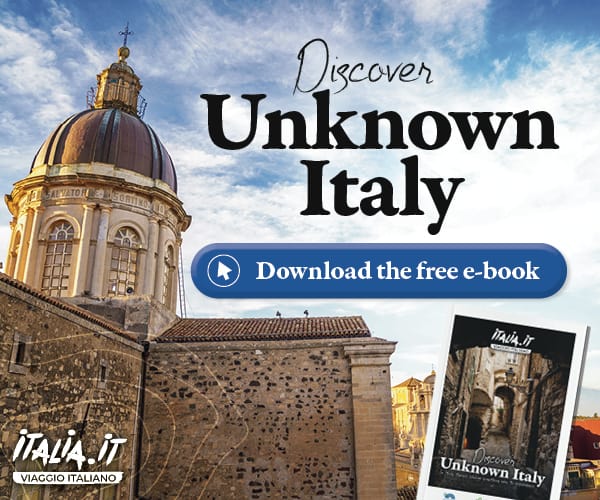
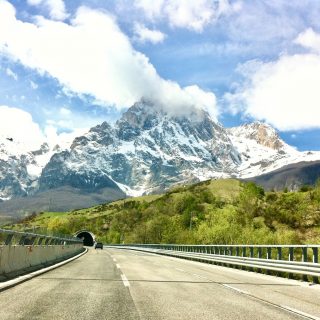
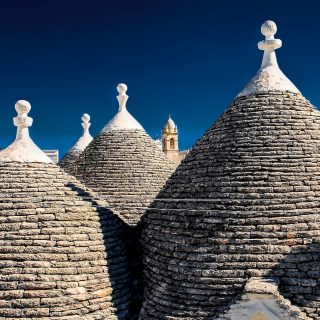
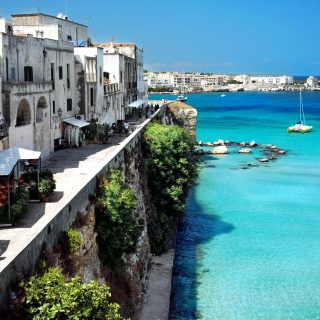
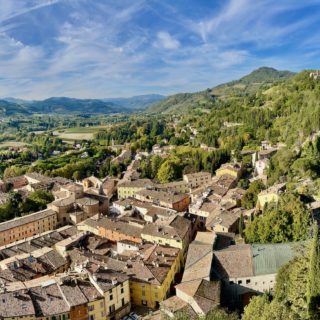






Thank you Ferona for your comment. I’m glad you enjoy reading my blog! 🙂
Cheers,
Keith
I know you probably won’t read this, but I just wanted to say I really enjoy reading your blog. You have a lot of great information on here and I always come back for more. Thank you for sharing it with us.